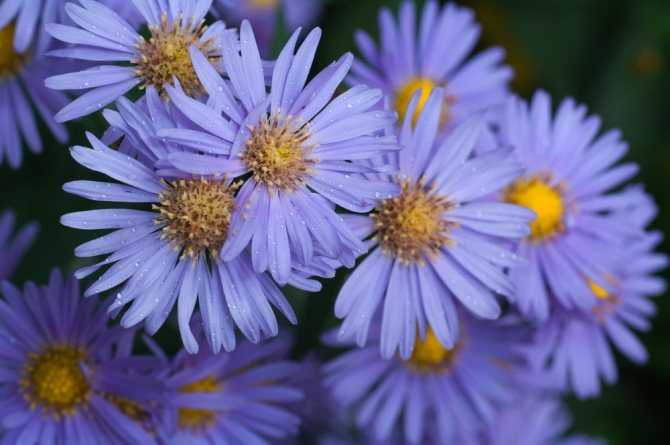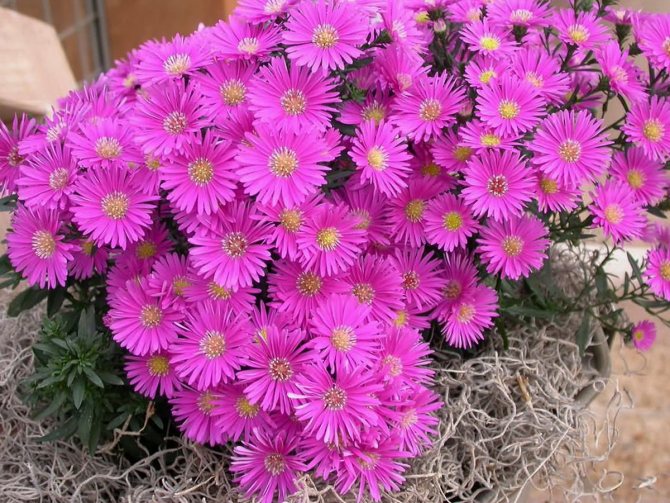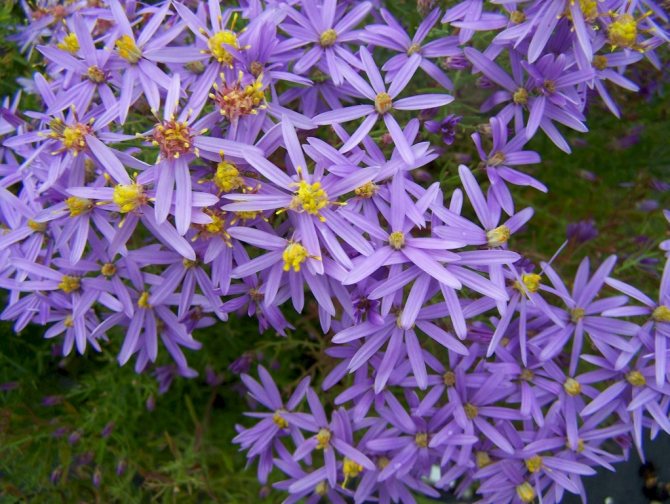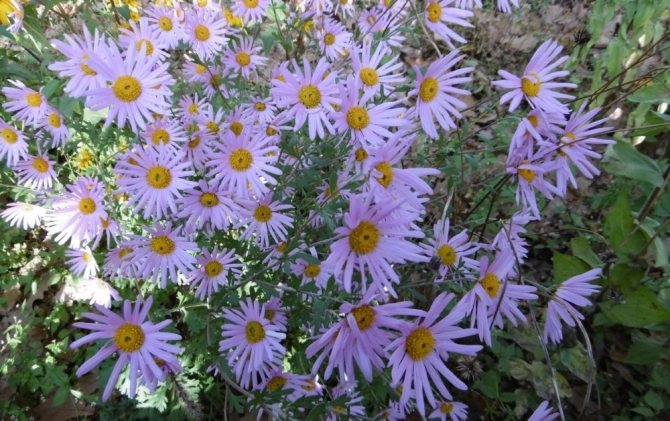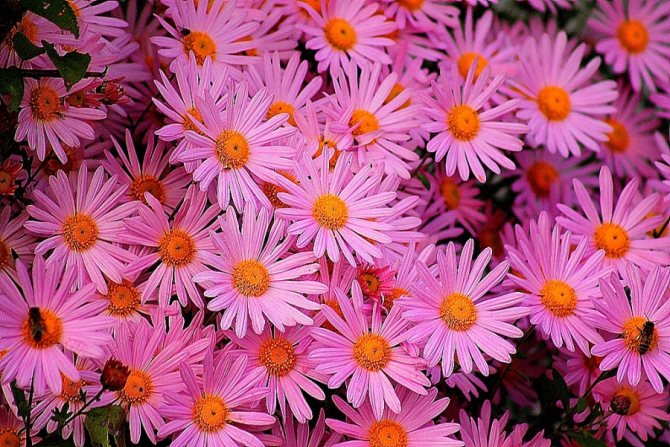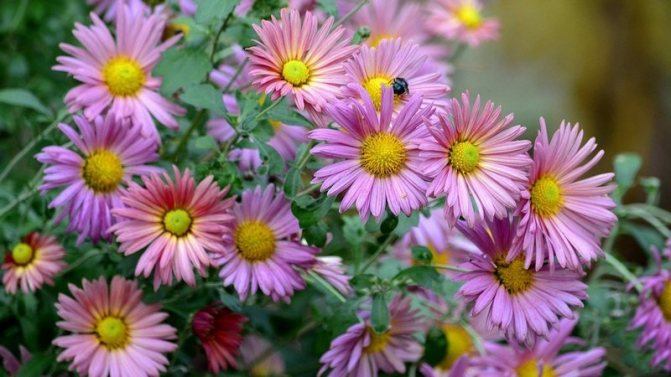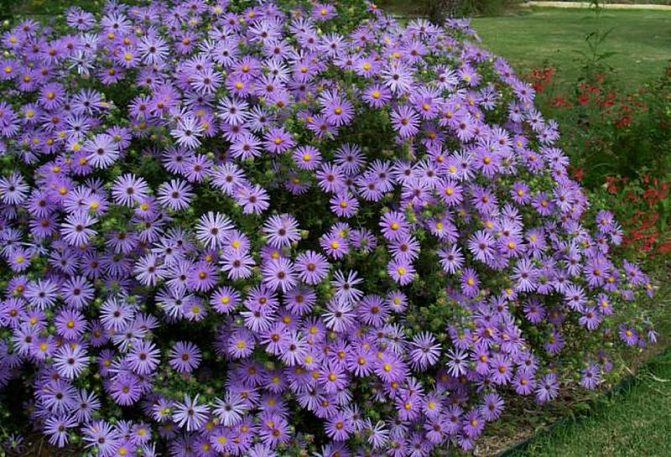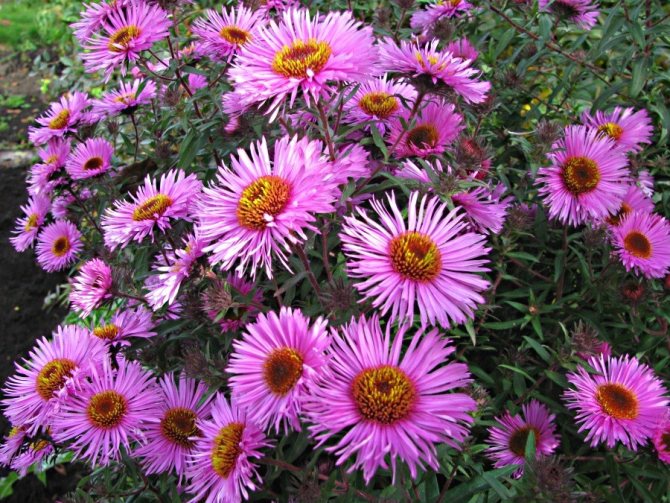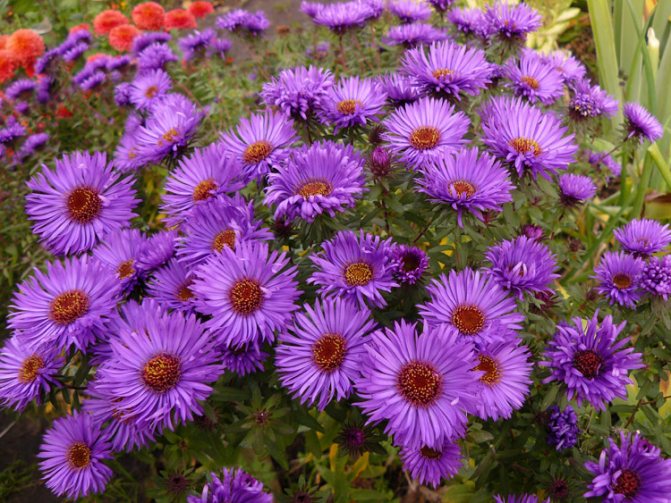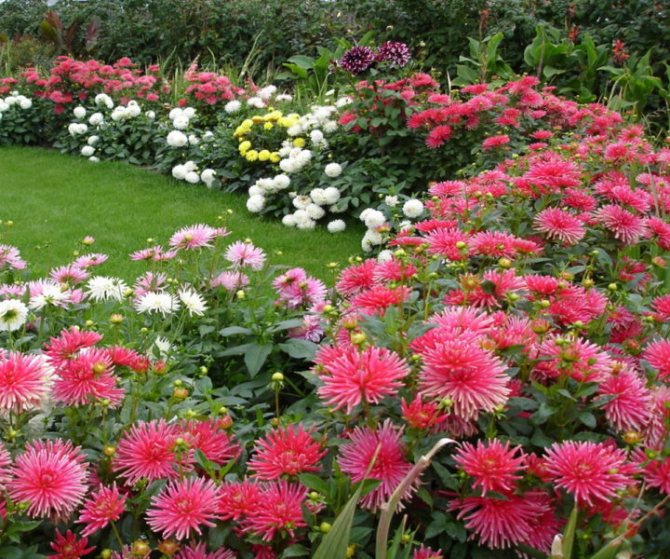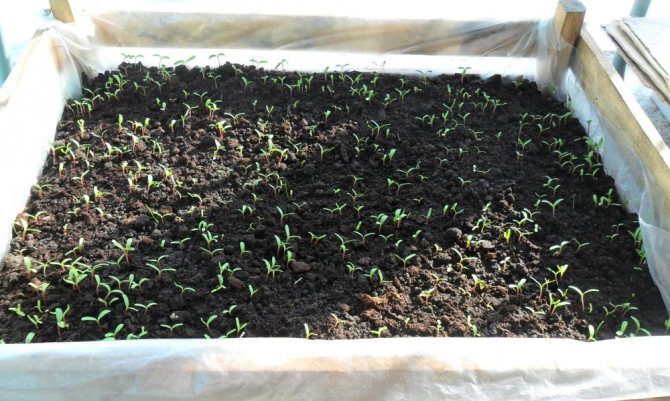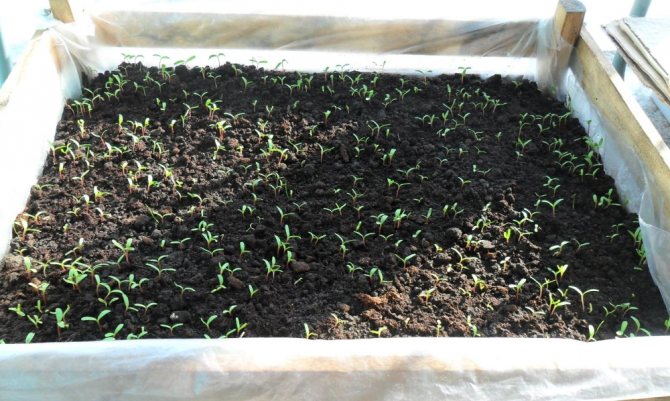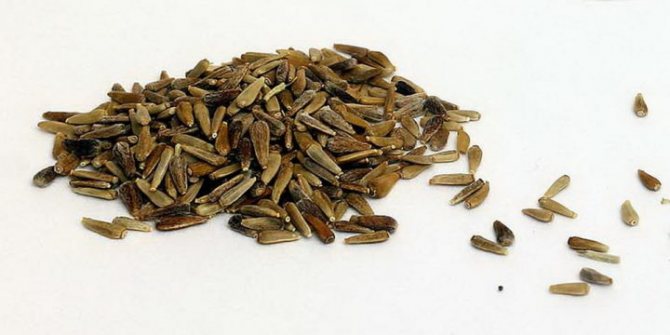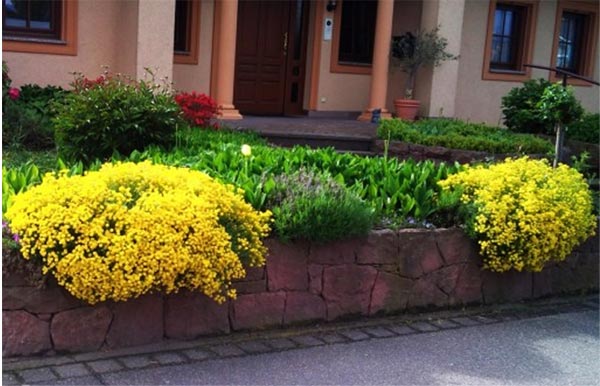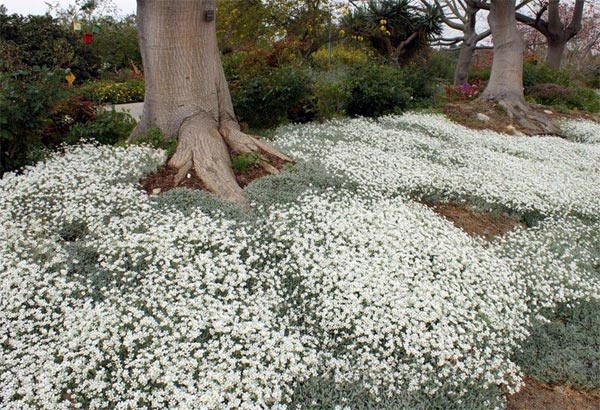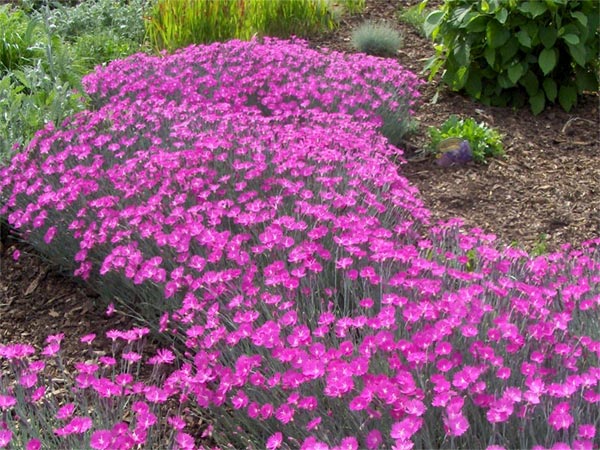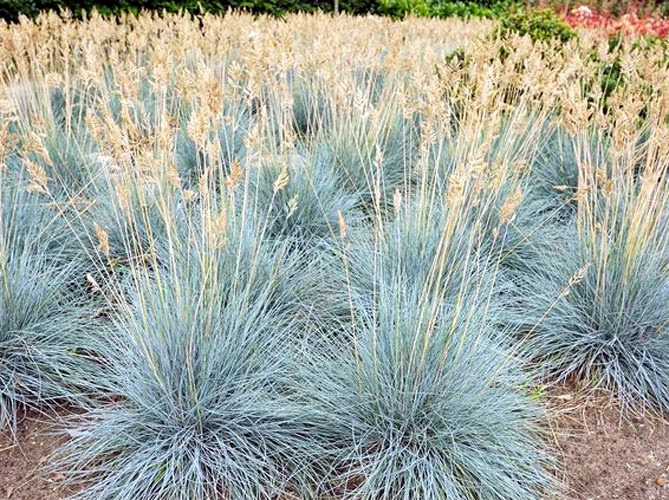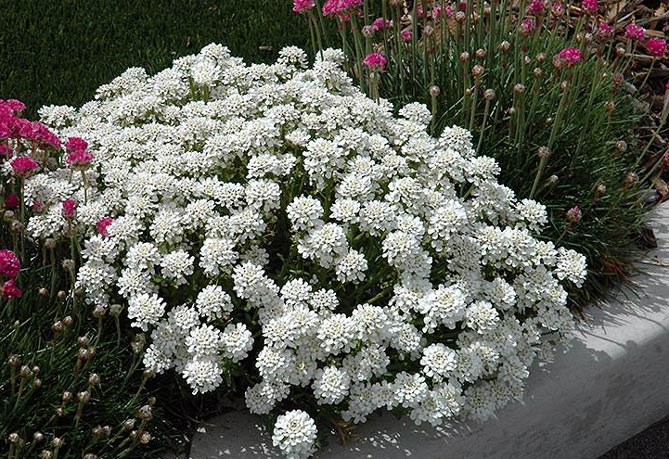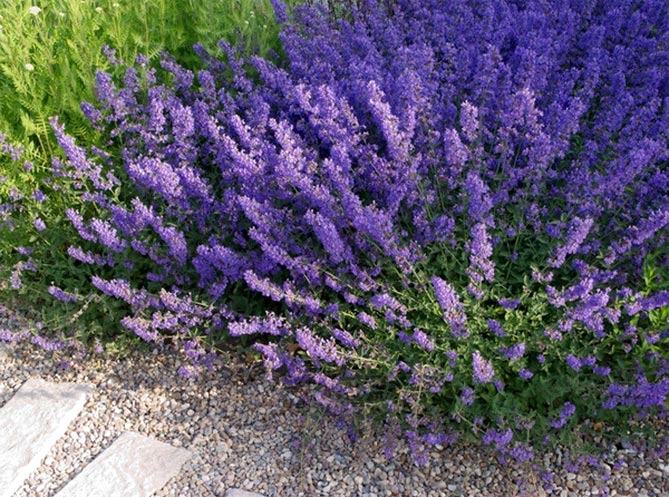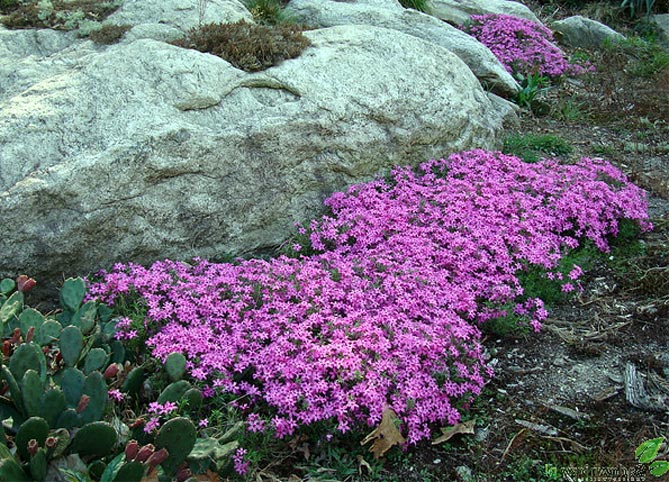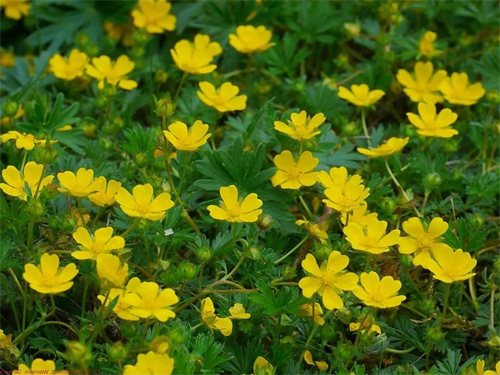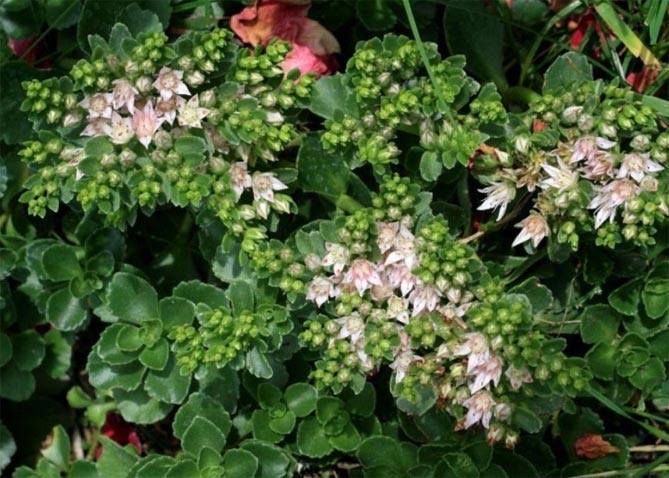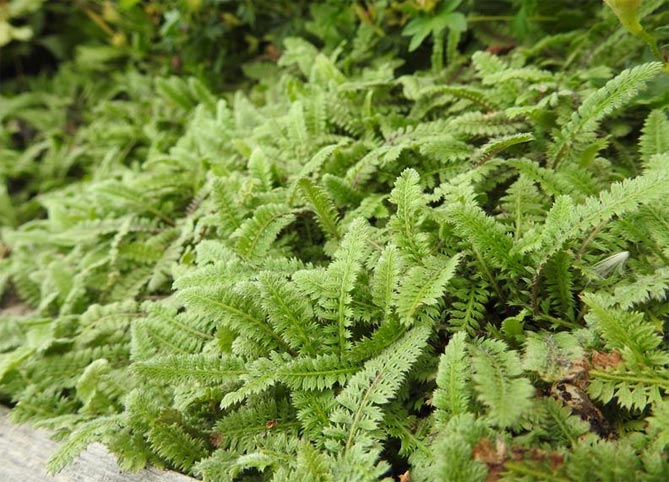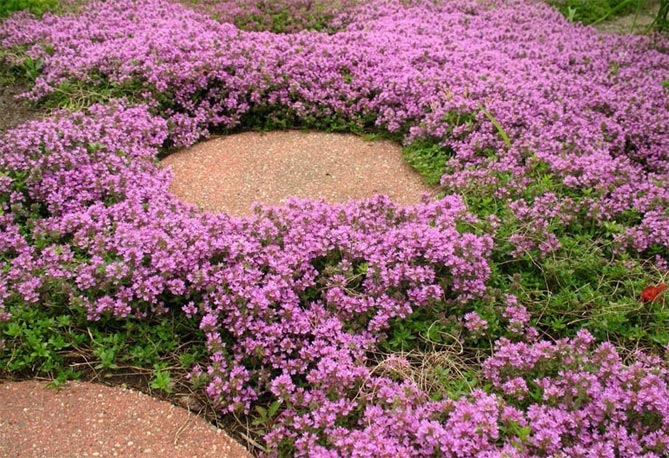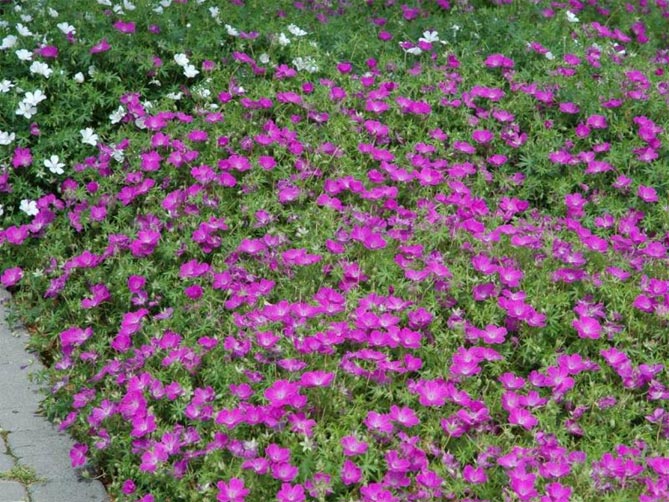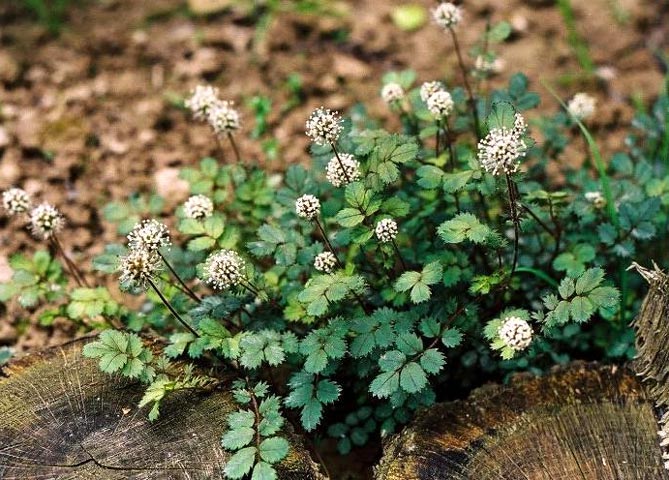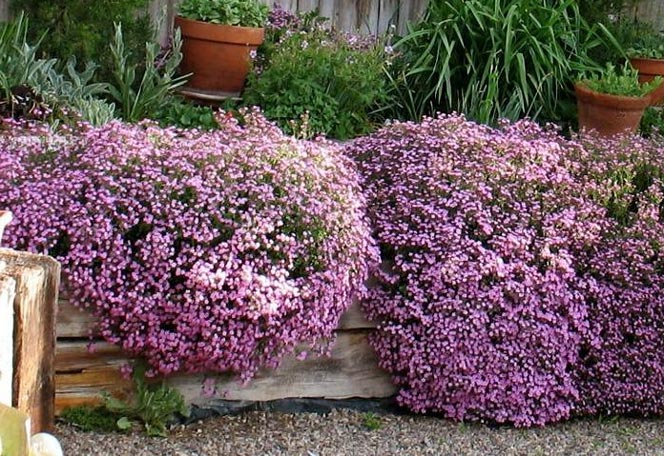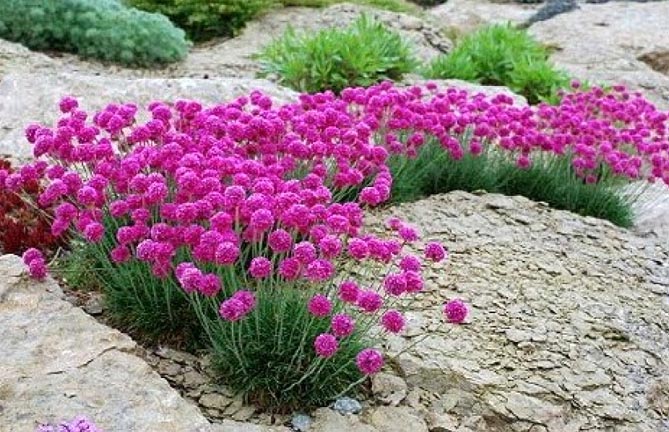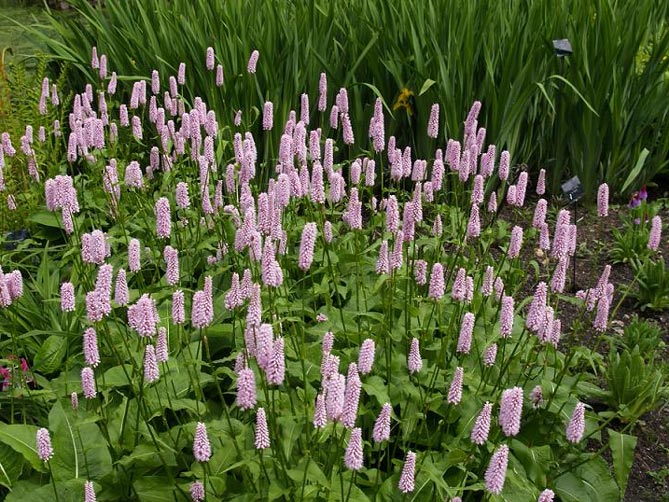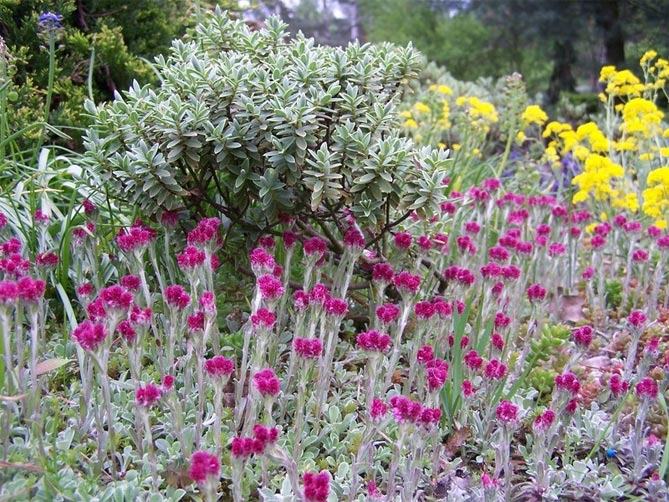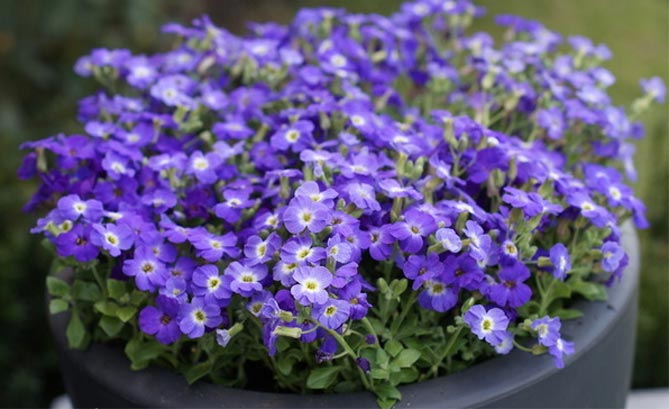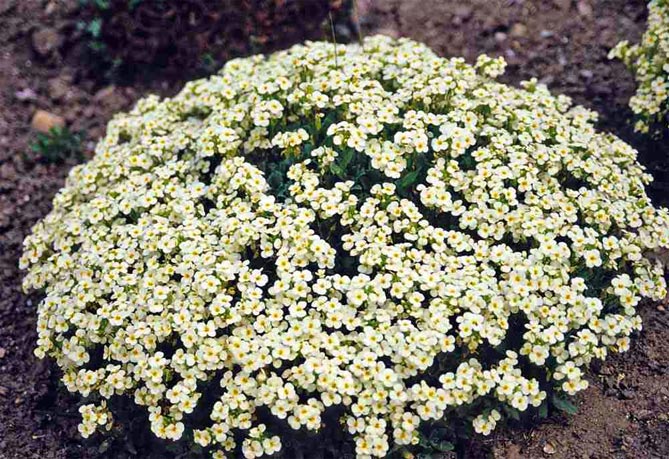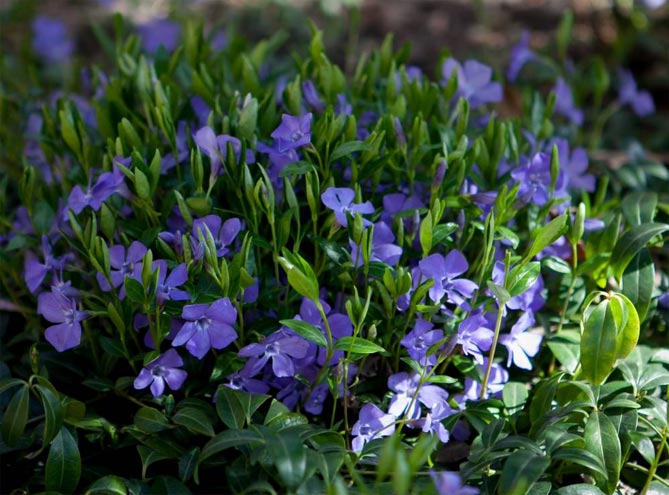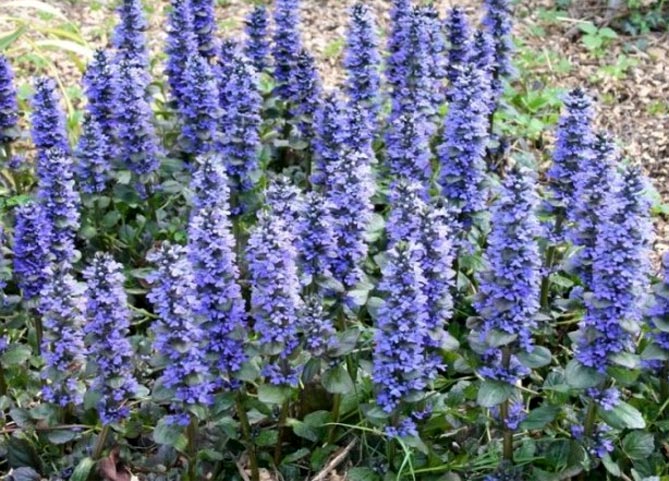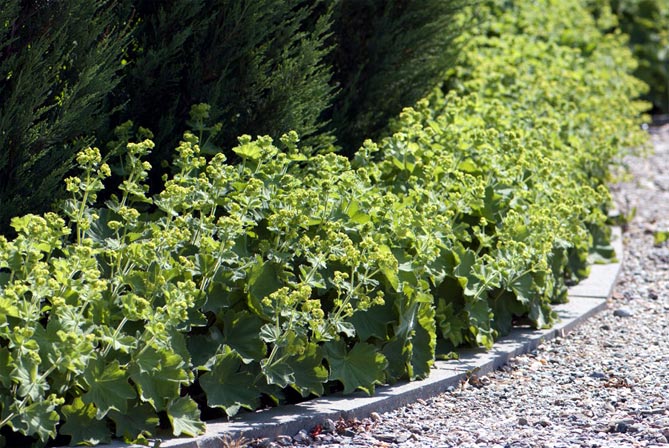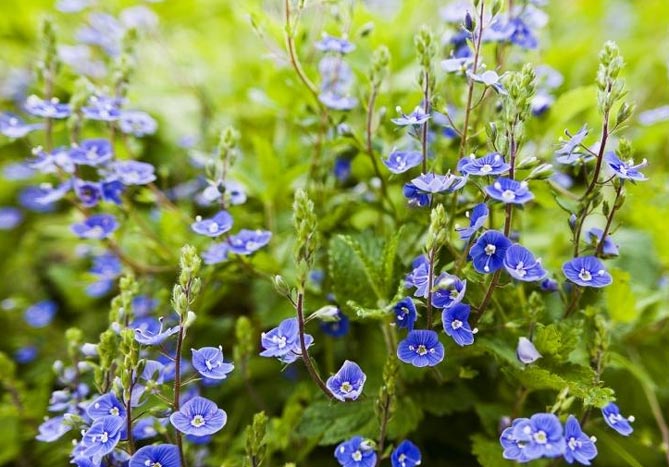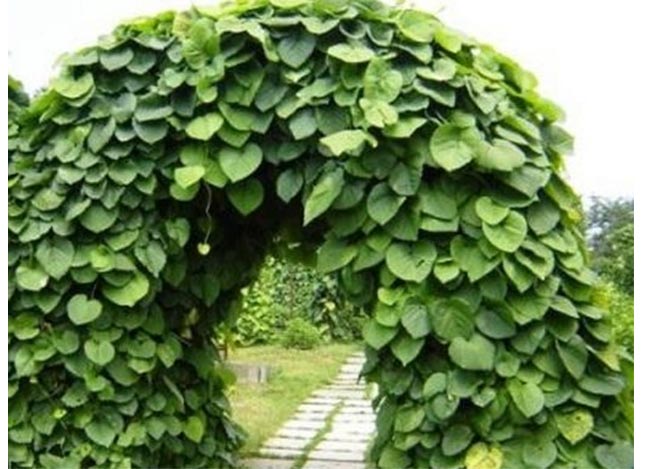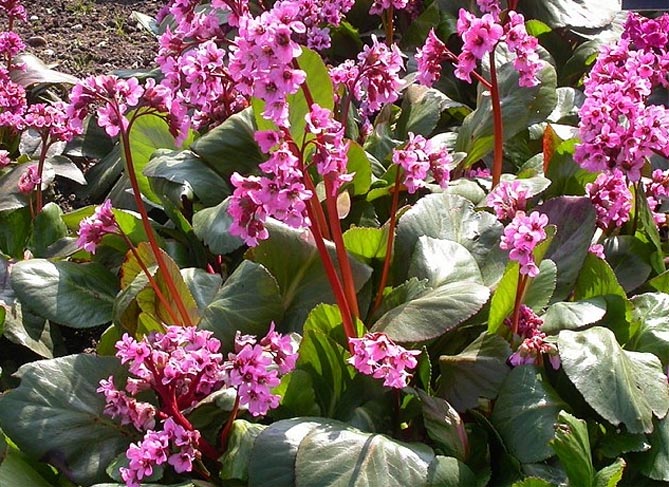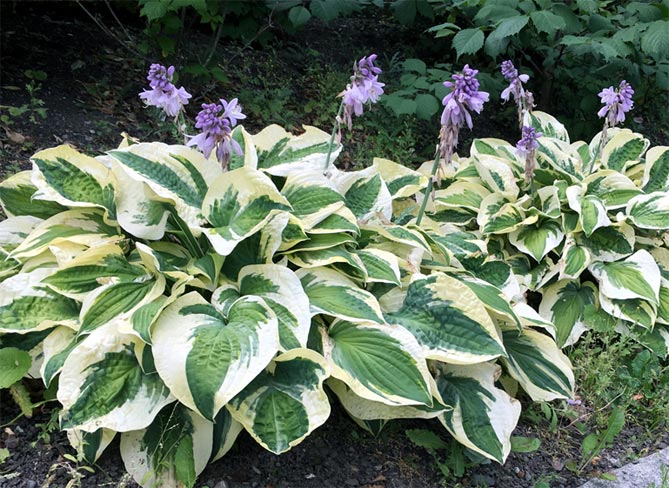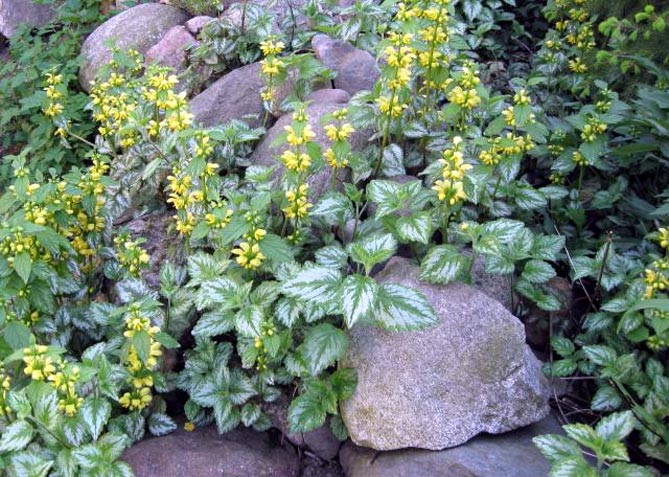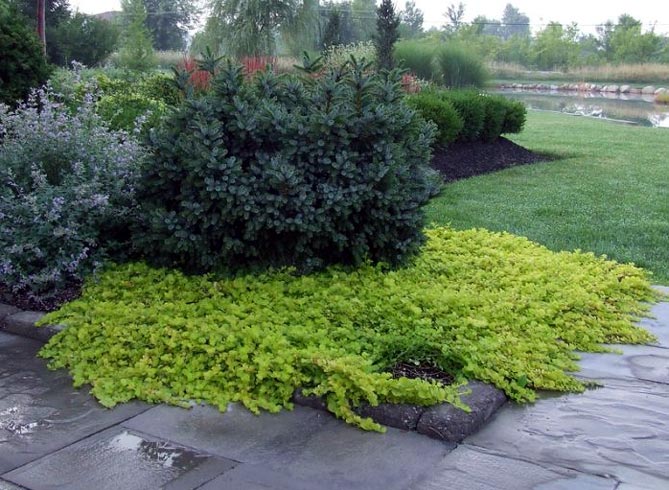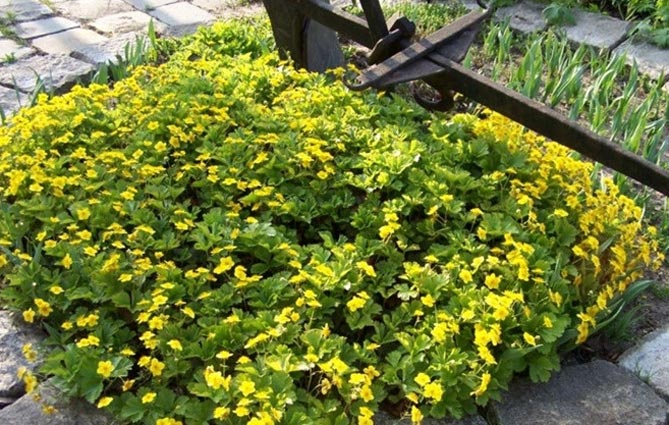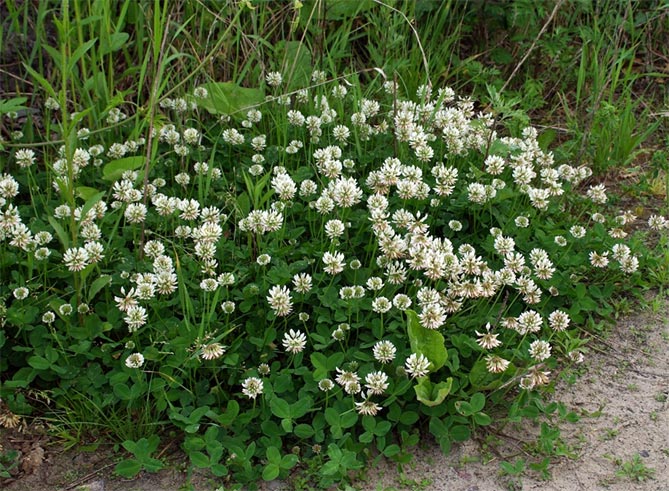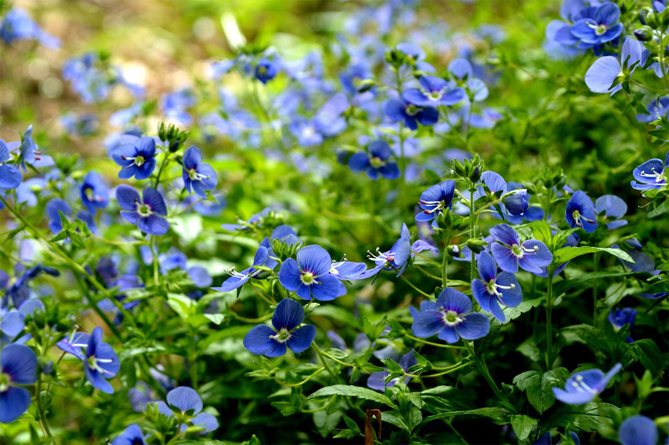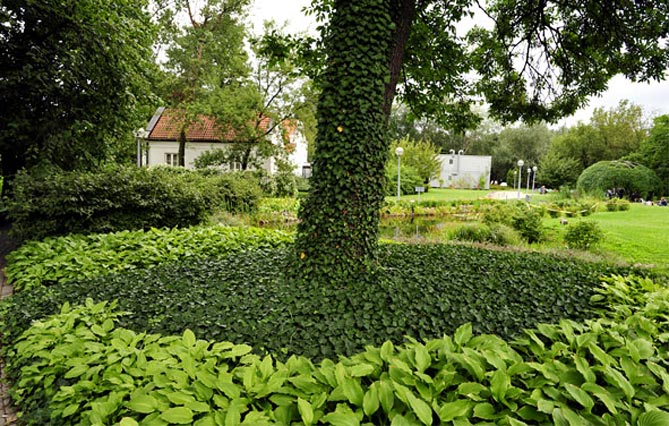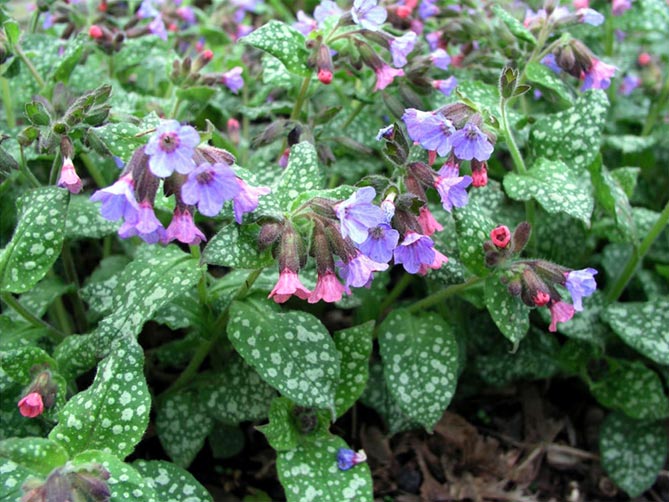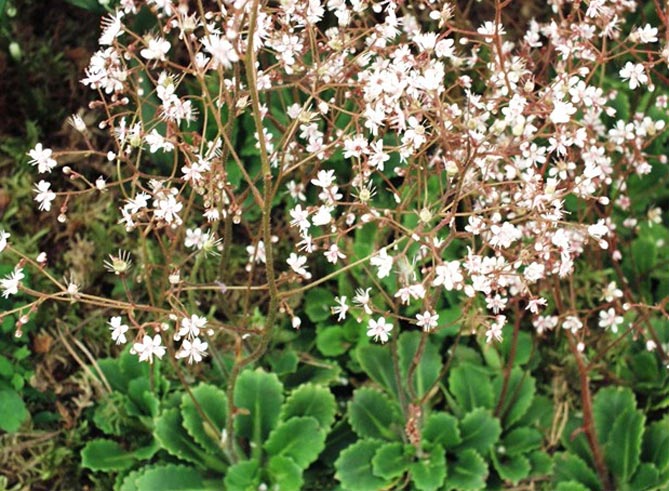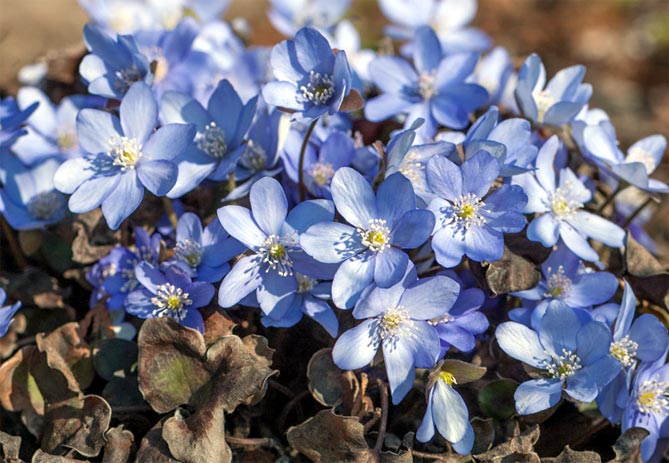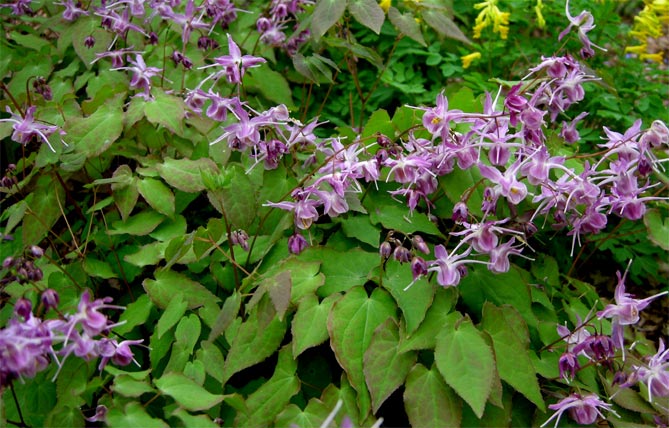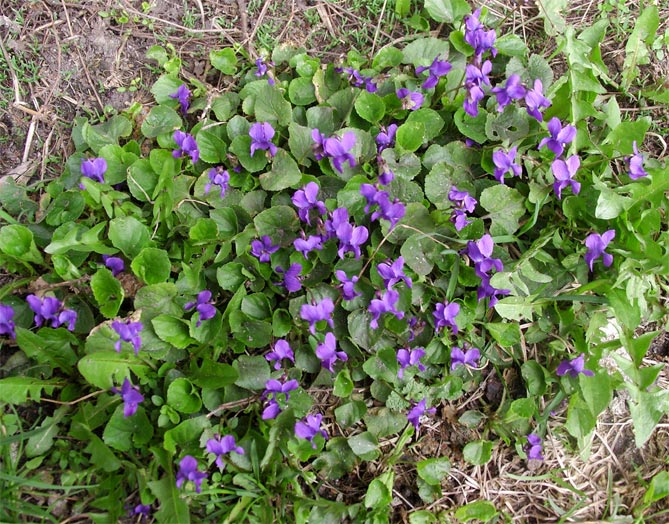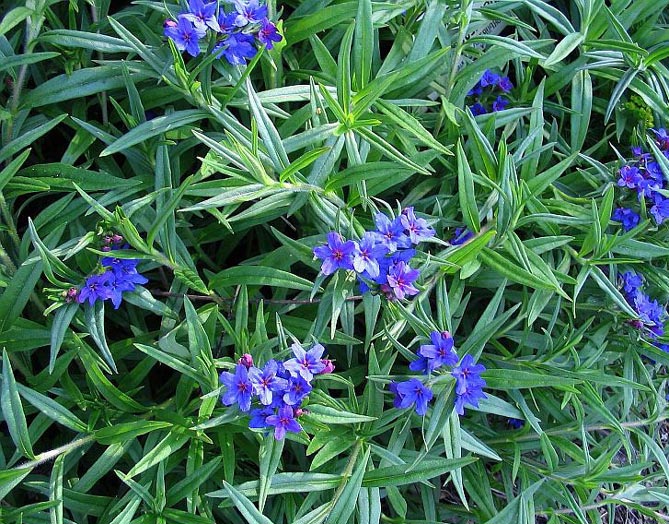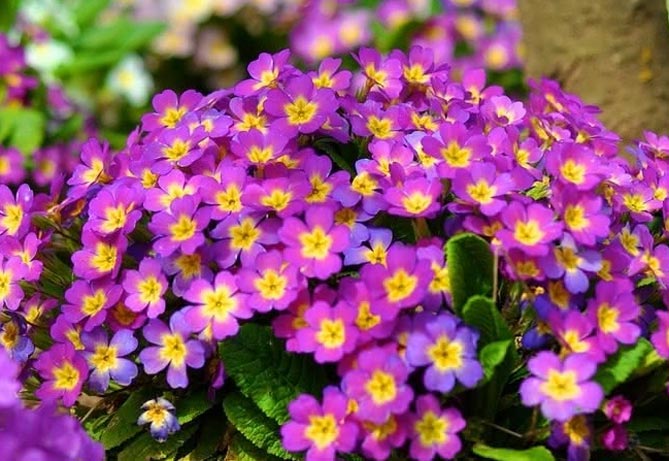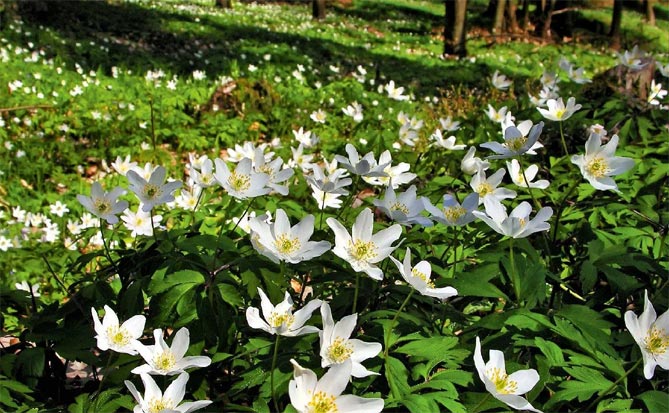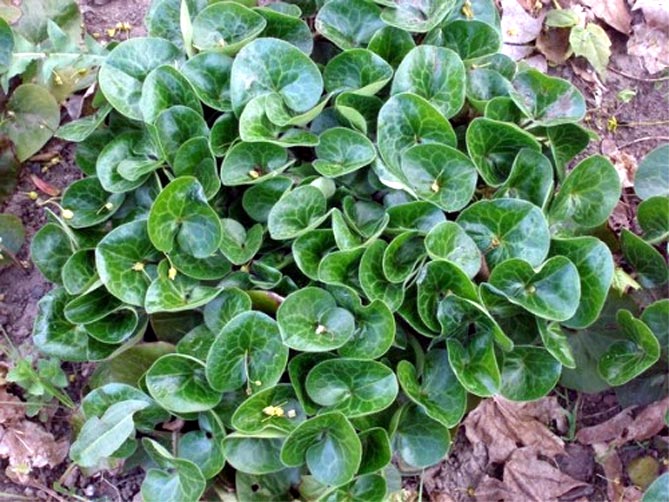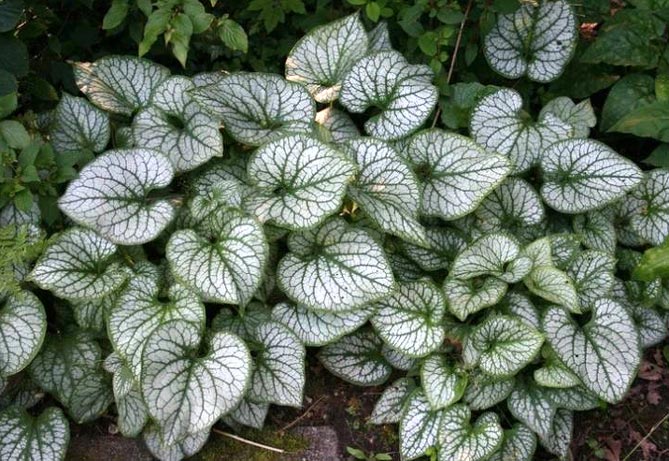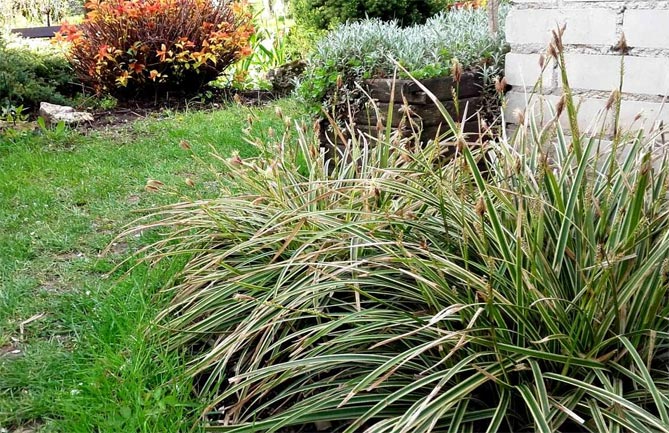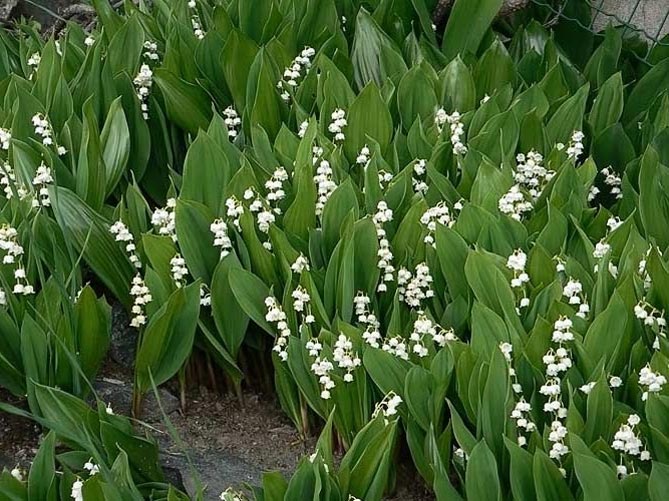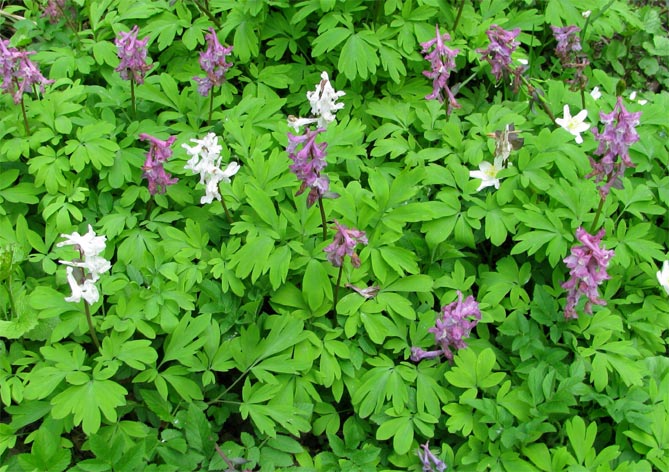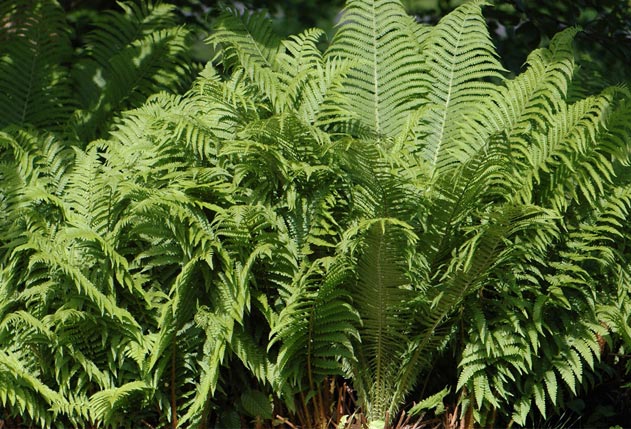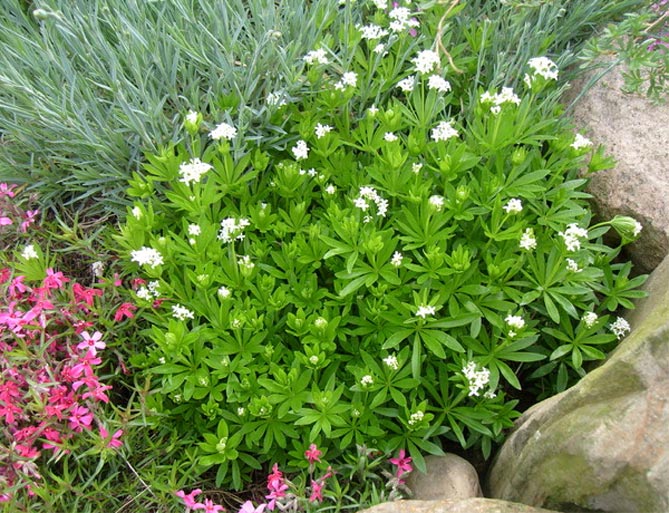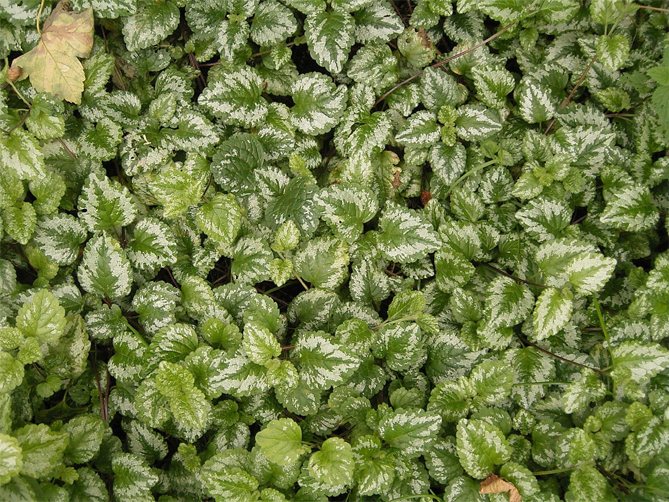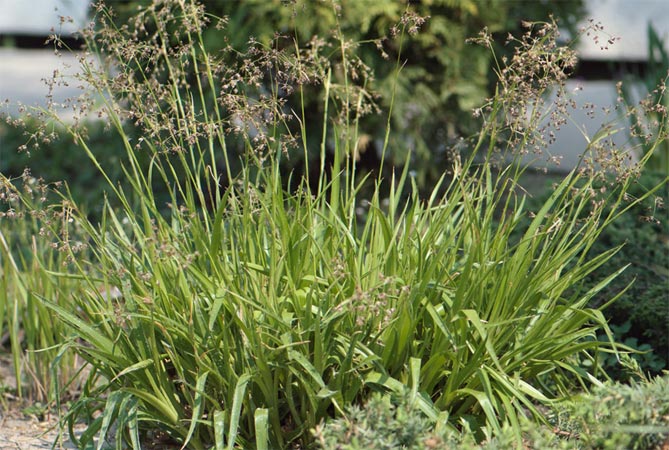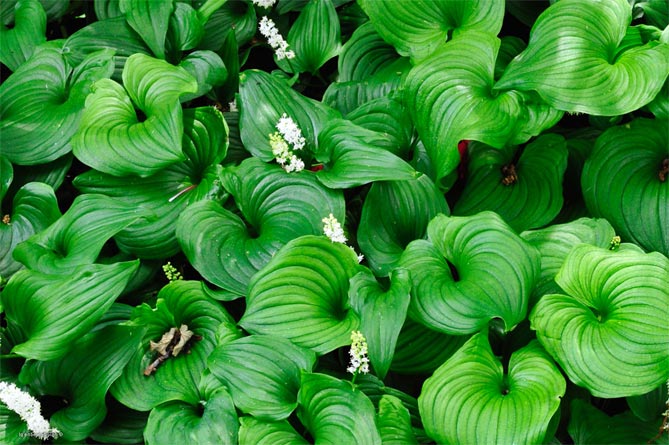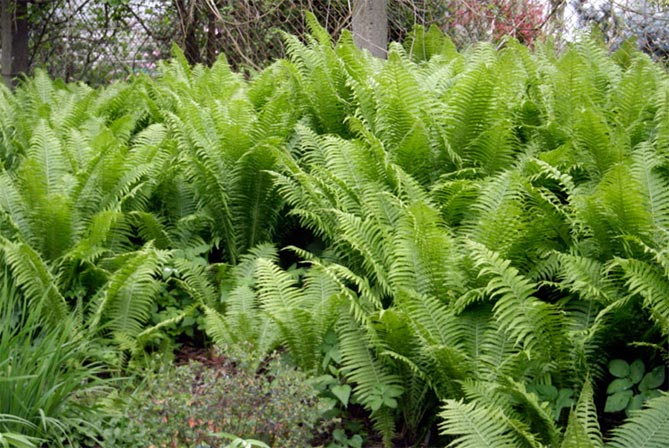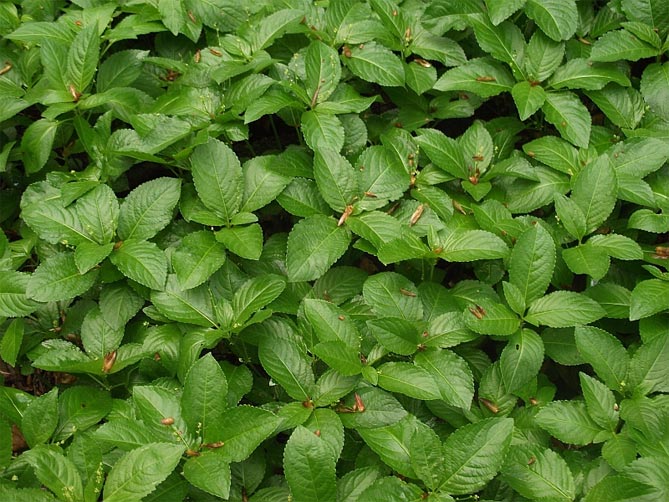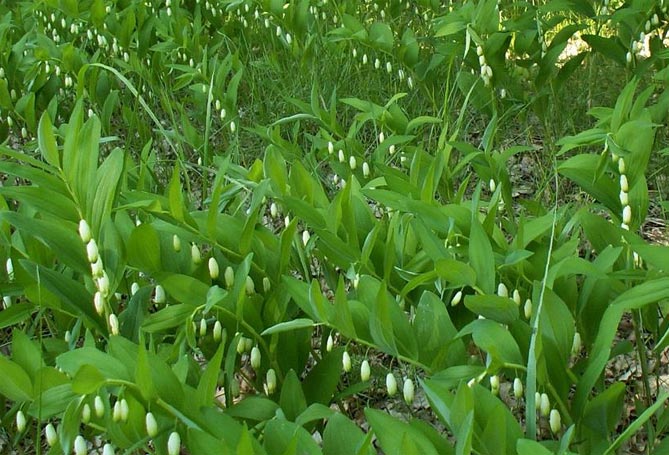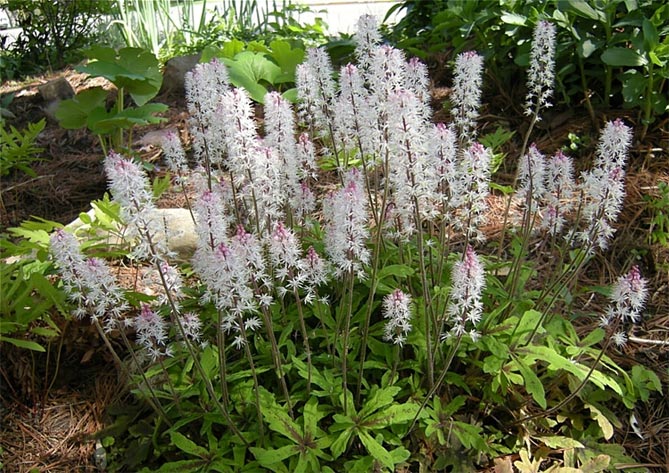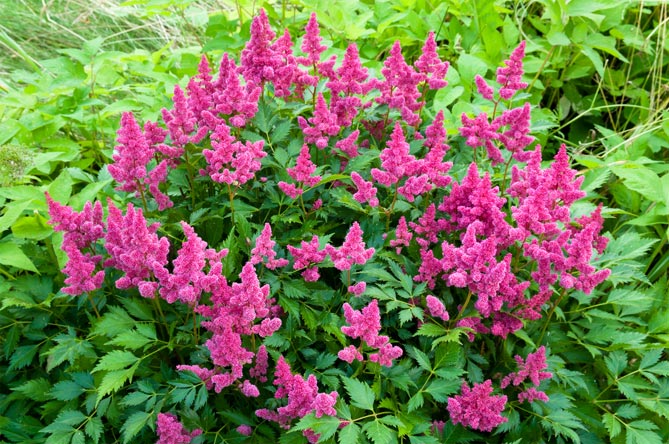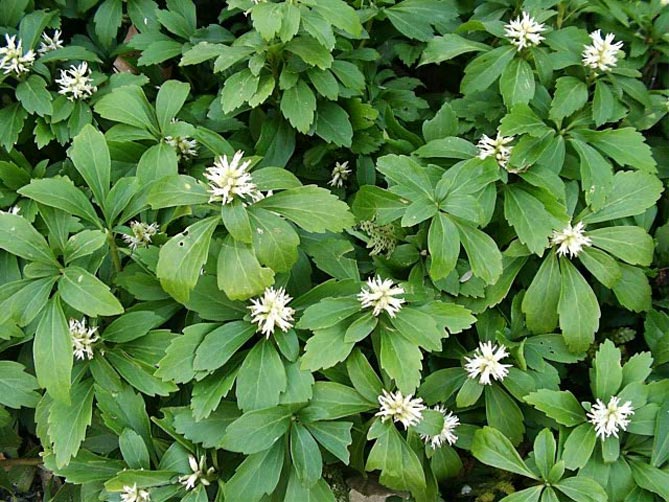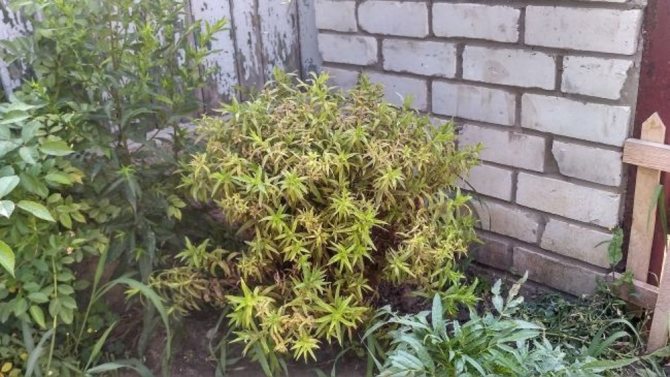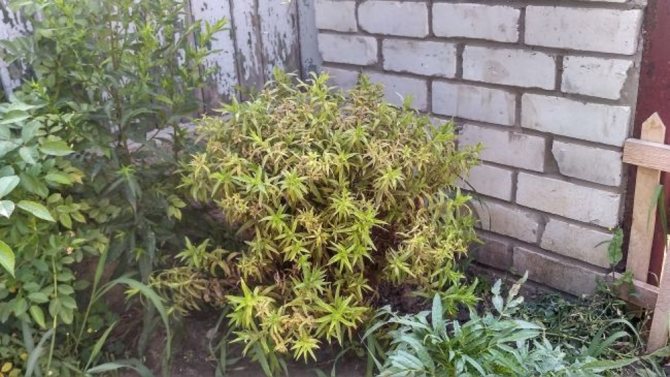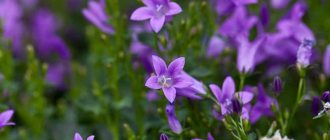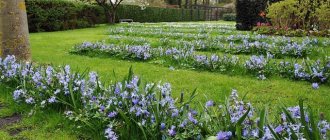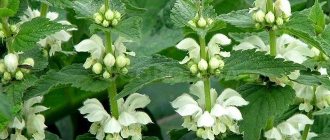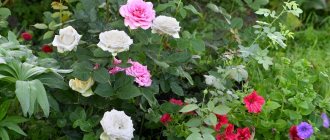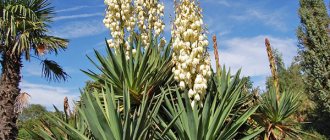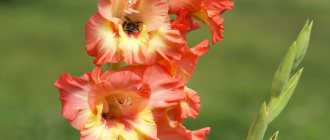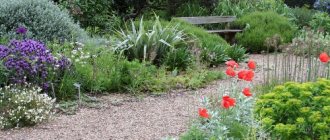Sentyabrinka or perennial aster comes from North America, where it grows in the wild even now. The plant belongs to the Aster family. It is a perennial shrub of various heights: from 40 cm to 1.5 m.
The stem is erect, the leaf is lanceolate, dark green. On the branched crown, many small flowers of various colors bloom. Flowering occurs mainly in September, for which the plant got its name.
All types of saintbrinks can be divided into two groups. Astra Novobelgiskaya - can be of different heights depending on the variety. The leaves of the Novobelgian aster are devoid of pubescence. Astra New England - higher than Novobelgiskaya, the bush is more powerful and spreading, it has more leaves and flowers. Bushes of this variety take longer to grow.
Description
The homeland of this flower is North America, but at the same time it perfectly took root in a temperate climate.
Gardeners often grow saintbrink flowers, reproduction, planting and caring for which is not difficult, but at the same time the plant allows you to keep the flower bed presentable until the onset of frost.
Even if you do not take care of this plant, it continues to grow normally, although it quickly runs wild.
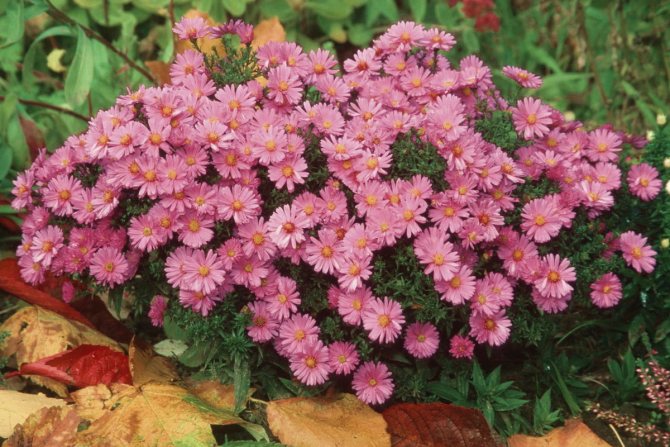
The shape of the bushes resembles an inverted pyramid:
- powerful stems;
- well branched;
- erect, densely covered with small leaves.
There are many sorts of saintbrinks, among them there are tall ones - up to 2 m in height, and stocky ones, whose "height" does not exceed 30 cm.
In the last days of August, the stems are covered with many buds, and in mid-September, the flowers of Virginia asters reach their peak flowering. Inflorescences are basket-shaped, their diameter is from 1 to 5 cm.
Interesting!
The foliage falls off during frost, and the inflorescences themselves retain their decorative effect at temperatures down to -50 ̊С.
During flowering, about 200 buds can bloom on 1 plant. Corollas are similar to chamomiles - the middle is ocher-orange, sometimes of wine or scarlet color, which is framed by a significant number of narrow petals.
The most common are purple and purple baskets.
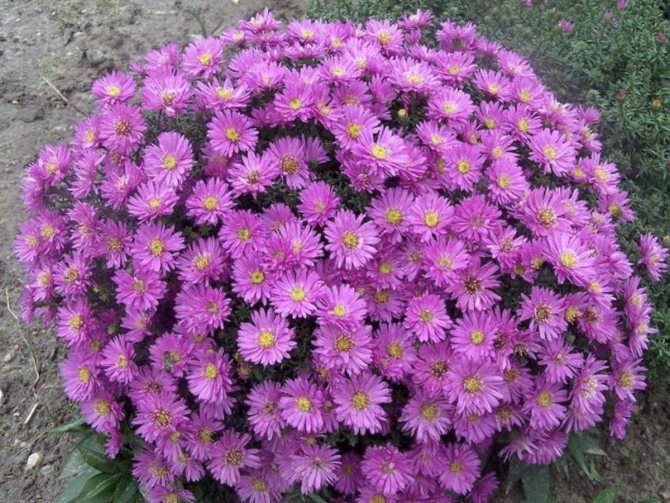

Lilac
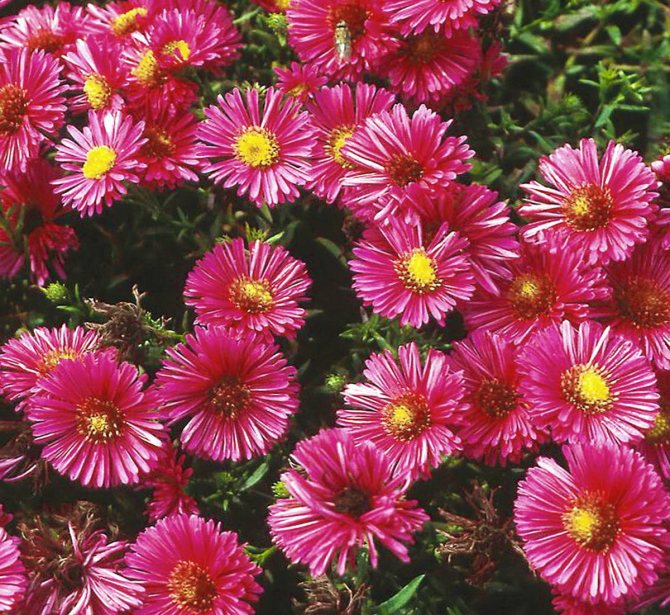

Purple
Pruning saintbrin
Pruning is not necessary for these flowers - septenins perfectly form their bush themselves, and are quite decorative without outside interference.
The saintbrin bushes will have a beautiful spherical shape and bloom luxuriantly without any pruning.
But a cleansing haircut, as we have already indicated, is necessary for flowers. If it is not carried out, flowering will be significantly reduced. This is the so-called sanitary measure, which can be carried out at any time, regardless of the season. If the septenchina begins to take on a sloppy appearance due to old or dry leaves and stems, it should be cut off, removing all excess.
In addition, saintbrina loves large autumn pruning - the bush winters better, blooms faster and blooms more abundantly. Autumn pruning comes down to completely removing the top of the bush after the plant is completely dry. With sharp scissors, you should simply cut off all the stems at the root, leaving no more than 3 cm above the ground.
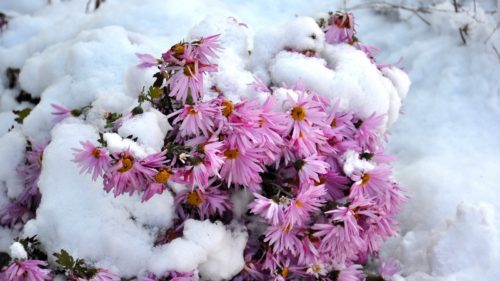

Popular varieties
All varieties of Virginia asters can be subdivided into 3 categories:
- tall;
- medium-sized;
- undersized.
Dwarf varieties include those varieties whose bush height is approximately 40 cm:
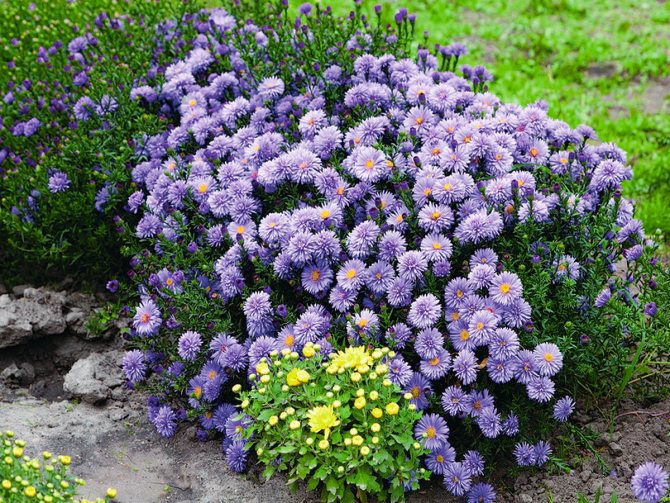

Audrey sentrynks - inflorescences are painted in pink-purple color.
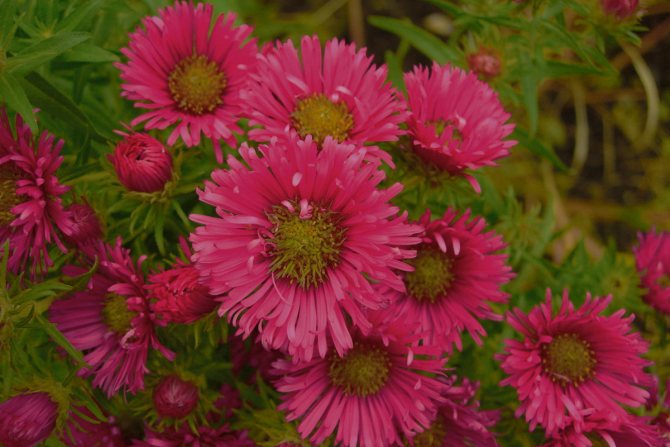

Jenny - scarlet inflorescences
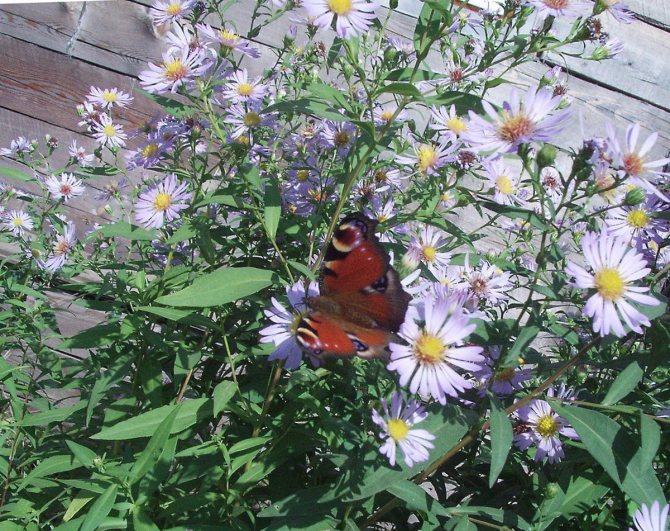

Sentyabrinki Snowsprite - white inflorescences.
The following varieties belong to the medium-sized varieties of Sentbrinks:
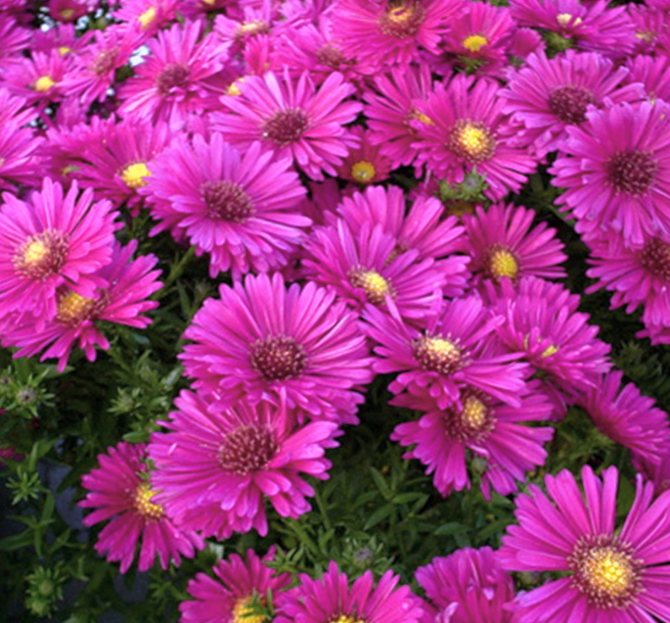

Ellina - the height of the bushes is about 80 cm, each of the corollas reaches 5 cm in diameter, and the color of the flowers is intense pink.
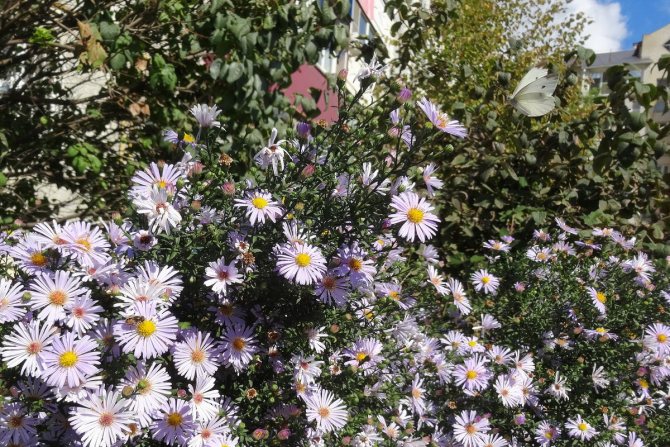

Cassie - on average, the height of the bushes of this variety is 85 cm. Corollas are white, their diameter is approximately 3 cm. During flowering, they form a lush solid cap.
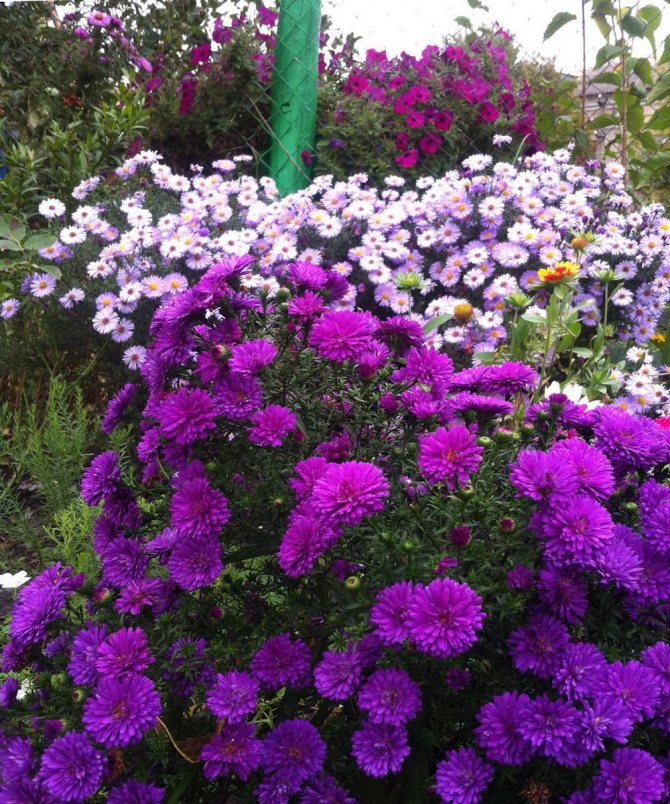

Royal Velvet is a fairly popular variety due to the unusual color of the inflorescences - purple with a bluish tint, which creates a feeling of some internal "glow".
Tall varieties of Sentbrinks reach 1 m and more, while the diameter of their corolla is from 3.5 cm.The most common are the following varieties of tall Stembrinks:
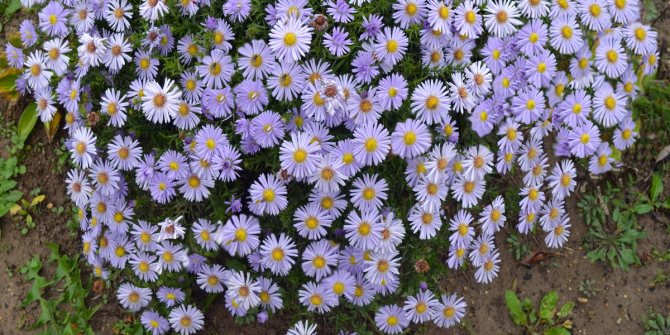

White Lady is a bush with a height of about 1.1 m. The inflorescences are painted white, and the core is yellowish.
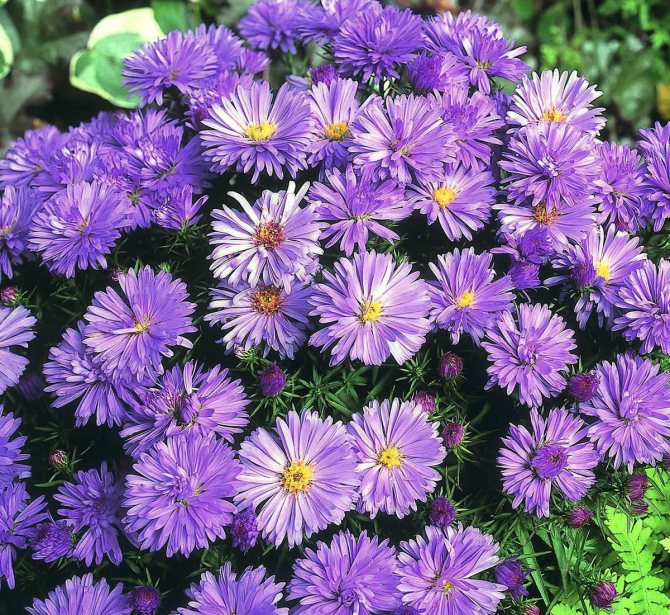

Lady in blue - the height of the bush is from 1 m, and the inflorescences are painted in a pleasant blue-blue color.
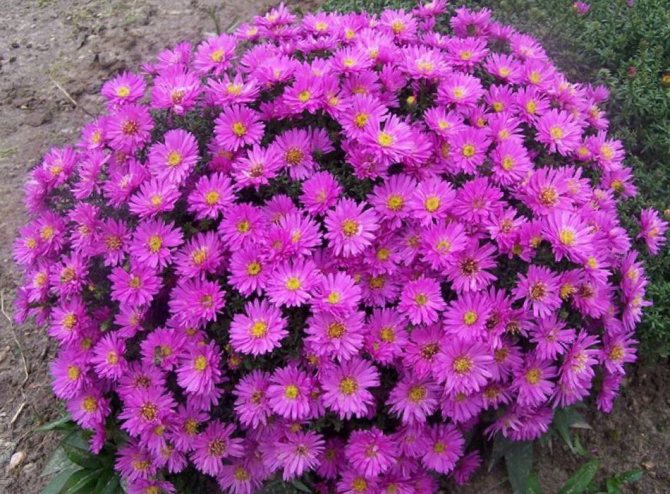

Dick Ballard - the main feature of this variety is the arrangement of the petals in the inflorescences in 2 rows. The color of the flowers is pastel pink.
There are so-called North American or New England varieties of perennials, whose "growth" ranges from 1.4 to 1.7 m.
These types of saintbrinks include the following:
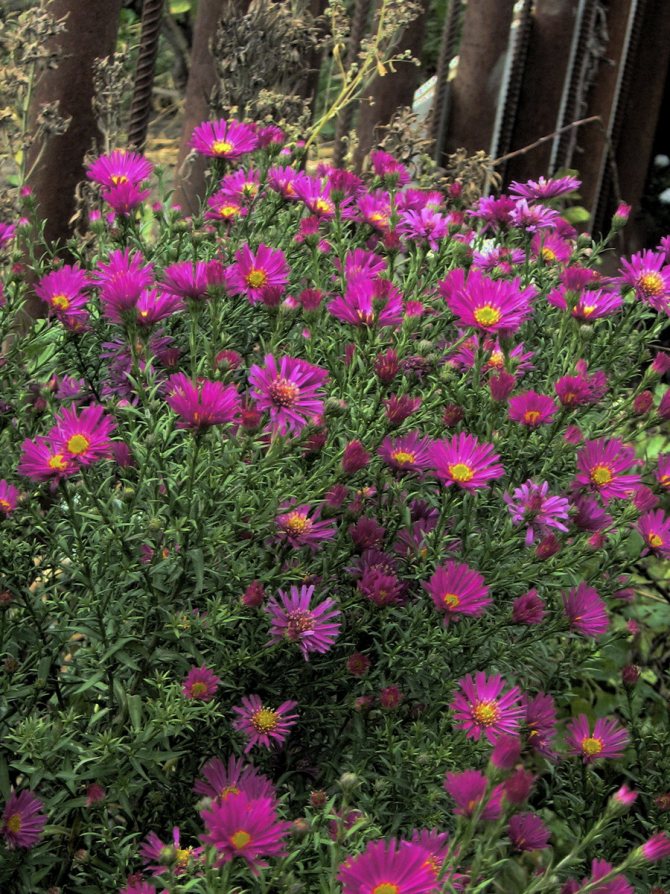

Sunset - the height of the bush is about 1.2 m. The inflorescences are painted in an intense crimson color.
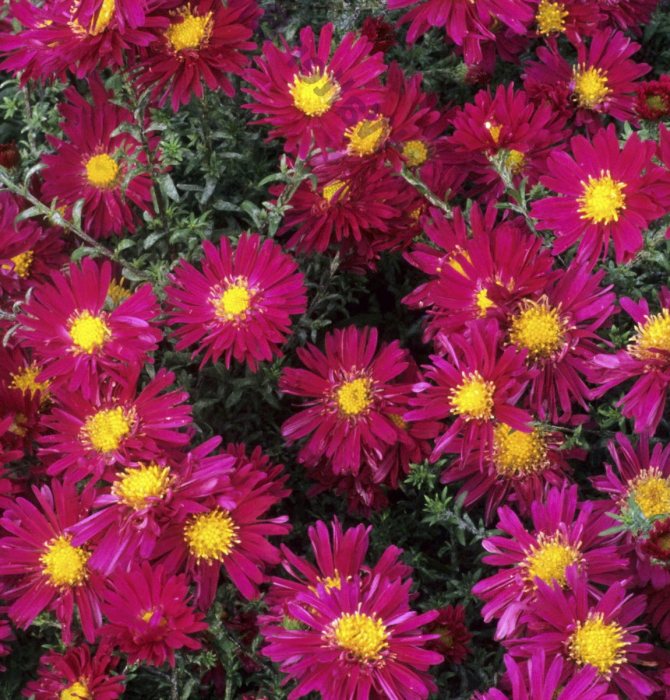

September Ruby - corollas of flowers are painted in wine-red color.
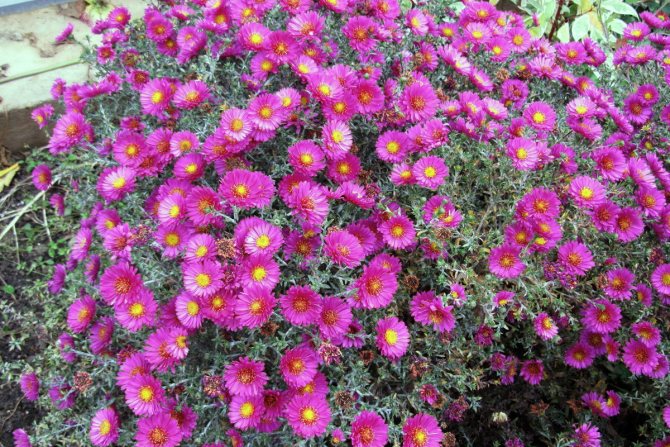

Konstanz - the "growth" of this perennial aster reaches 1.8 m, and the inflorescences are painted in purple tones.
Types of ground cover perennial plants
Ground cover perennial flowers are undersized, creeping plants with uplifting shoots. Thanks to their rapid growth, the formation of a dense, beautiful carpet, ground cover perennial plants are used to decorate the garden. According to the classification, the following varieties are distinguished:
- deciduous and evergreen;
- light-loving and shade-tolerant ground cover perennials;
- slow and fast growing;
- early flowering and late flowering;
- drought-resistant ground cover perennials and growing on moist soil;
- flowering and decorative deciduous;
- frost-resistant ground cover perennials and requiring shelter for the winter.
When choosing the variety you like, it is necessary to take into account the varietal characteristics of the plant, correctly approach the choice of the place and follow the agronomic rules. Having planted a ground cover perennial on a personal plot, you can quickly turn it into a flowering carpet that will delight the eye from year to year.
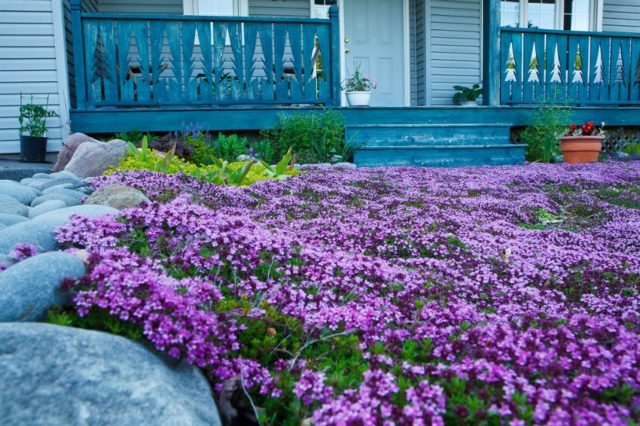

Planting and leaving
Sentry women do not need close attention and care, as such, do not require. Nevertheless, there are certain agrotechnical subtleties that will make it possible to achieve the most lush flowering from a perennial aster.
The first priority is the selection of the right place for the growth of the saintbrinks. Virgin asters feel most comfortable in open areas, where the sun's rays freely fall on them.
But, at the same time, this place must be protected from gusts of cold winds and drafts.
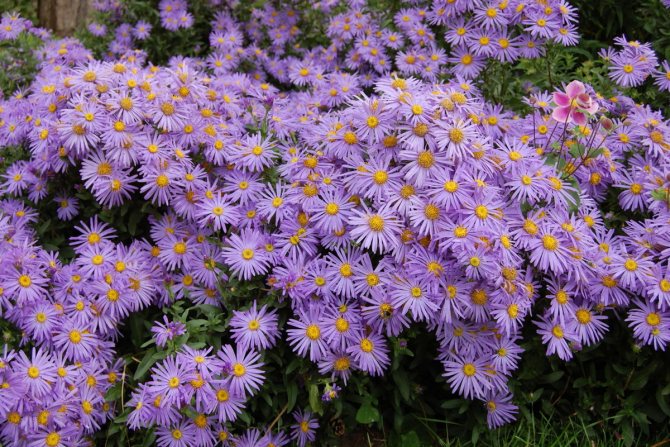

Important!
Sentyabrinki react extremely negatively to flooding - excessive moisture in the soil in which they grow leads to the death of the Virginia aster.
In relation to the soil, the saintbrinks, in addition to moisture, do not impose requirements, the only thing is that these perennials develop worse on clayey heavy soils.
All the care of Sentbrinks in general implies the following
- watering;
- loosening the soil;
- fertilizing with fertilizers;
- sanitary pruning.
When planting a Virginia aster, in order to achieve maximum decorativeness from it, you need to pay attention to the following points:
The preparation of the territory for planting should be done ahead of time - 2 weeks before placing the plant in the ground, it is required to dig up the ground to a depth of 1 piece of a shovel.
At the same time, organic fertilizer - humus, as well as complex mineral fertilizer should be introduced into the soil.
On the day of planting, it is required to prepare holes for the size of the root system of each individual plant.
The well needs to be well moistened with water and allow the liquid to completely go into the ground.
Further, seedlings are lowered into the hole, the roots of which are sprinkled with earth, which is subsequently slightly crushed.
Planting technique - between the individual bushes of the Virginia aster, it is required to maintain an indentation of about 50 cm.
In the case of planting plants along the path, it is possible to reduce the distance between the bushes to 20 cm.
The planting of saintbrinks should take place at a distance from other plants. The root system of Virginia asters is powerful enough and capable of absorbing moisture from sufficiently large areas.
Irrigation regime - the initial 10-14 days after planting the saintbrinks in open ground, it is required to moisten the soil with an interval of 1 day.
This tactic of watering contributes to the successful engraftment of plants in a new place. Sentyabrinsky easily tolerate temporary periods of drought, and overflowing leads to the fact that the plant begins to hurt.
After the completion of the first 2 weeks, virgin asters need to be moistened once a week in case of dry weather, and if the temperature and humidity are average, then the plant needs watering only 2 times a month.
The best option for watering is slightly lukewarm water.
Top dressing - it is enough for santbrinks 2-3 times per season. Complex mineral fertilizers are suitable.
The first time it is required to fertilize the plant at the beginning of the springtime, then mainly nitrogen should be introduced.
The second feeding must be in the middle of summer, and during this period the plant needs potassium.
The third and last dressing is often done during the budding period or directly during flowering. At this time, phosphorus should prevail.
Pruning is a sanitary measure and should be done throughout the growing season.
In the course of manipulation, dried foliage is removed, shoots injured or knocked out of the overall composition are cut off.
In the autumn season, when Virginia asters finish flowering, all shoots are cut off at the root, only "hemp" of about 2 cm should be left.
Transplant - the plant needs a transplant, as the soil becomes depleted and compacted over time.
Also, asters tend to grow, and the excessive density of the bushes leads to the fact that the plants begin to interfere with each other.
The best transplant option is once every 4 years. The best time to transplant is spring.
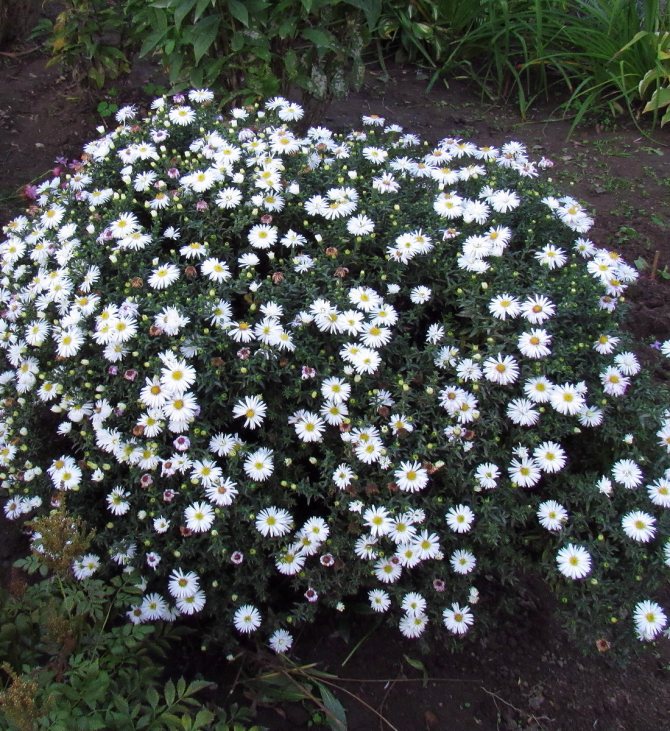

Composition of saintbrinks of the same color
Ground covers in landscape design
Ground cover perennials are an important attribute in landscape design. Many ground covers, in addition to having a decorative appearance, are unpretentious and can grow both in the shade and in the open sun. They feel great on the north side, under trees, in rock gardens, rocky and Japanese gardens, in flower beds and next to tall ornamental crops.
Advice! Many growers make voluminous flower beds from ground cover perennials of different colors. By choosing the most suitable combination of colors, you can turn an unattractive area into a luxurious, beautifully flowering place in a short time.
The range of perennial ground cover plants is large, so for each landscape composition you can choose the most suitable plants with a variety of colors.
Reproduction
It is possible to propagate the virgin aster in 4 ways:
- dividing the bush;
- cuttings;
- seed breeding option;
- segments of roots.
Root sections
In the course of the spring digging of the site, the roots of the saintbrink extracted from the soil are divided into several parts, so that each of them contains at least 2-3 buds.
After the planting material is placed in the holes and moistened with slightly warm water.
Cuttings
Cuttings that have been cut off from the saintbrinks are placed in a container with water during the growing season until the roots are formed.
After these cuttings are placed in the open field.
This breeding option for saintbrinks is rarely used, since its effectiveness is rather low.
Seeds
Seed propagation of Sentbrinks involves a seedling cultivation option.
It is virtually impossible to collect seed material from the bush - the seeds do not have time to ripen, and if they ripen, they lose their germination quickly enough.
The best option is to purchase seeds from a specialty store.
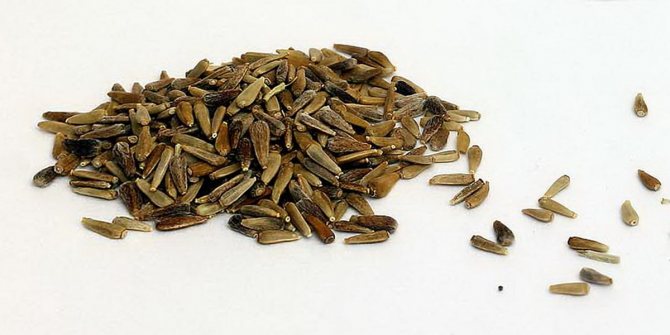

Seeds of santbrink
To grow seedlings of the Virginia aster, the following manipulations are required:
- Sowing seeds in seedling containers is done at the end of winter.
- Seedling containers or boxes are filled with a universal substrate.
- Seed material is planted to a depth of no more than 0.5 cm. The seeds are spread over the soil surface and slightly pressed into the soil.
- Watering is carried out from a spray bottle with the widest possible spray.
- The room temperature should be maintained at 22-25 ̊С, lighting should be diffused.
After 3-4 weeks, the seedlings are shown and the shelter is removed. Seedlings should be regularly ventilated, and the soil should be consistently moist. Watering to sunrises requires moderate.
If the sprouts are too stretched, they need to provide auxiliary lighting. After the formation of the first 2 true leaves, it is required to plant the plants in separate containers.
After about 10 days, seedlings need fertilizing with complex fertilizers.
In the middle of spring, it is required to start hardening for asters - they must be taken out into the street for 20-40 minutes every day. Landing in open ground is done at the end of spring.
Dividing the bush
This option is the most common when breeding saintbrinks. The procedure is performed in the autumn or spring season.
Once every 3 years, the bush is completely removed from the soil and divided into several parts.
Each of these parts contains a rhizome segment with 2 growth buds. They sit down and give root processes.
Features of the choice of plants
Most creeping perennials have a shallow root system, so they can be safely planted among other plants, under trees. Their frost resistance is also usually high. These perennials play the role of a carpet, because many are short in stature. They are spread by underground rhizomes or by spreading creeping shoots.
When choosing a creeping perennial for a garden, you need to take into account the peculiarities of its cultivation:
- Frost resistance. This important feature determines the longevity of the planting, so you need to choose the species that are suitable for specific climatic conditions.
- Strength of growth - it depends on the right choice whether the entire surface will be covered in 2-3 years or much longer.
- Tolerance for diseases and pests, which in susceptible plants can ruin our efforts.
- Regeneration of plants after rejuvenating pruning.
- Decorative value.
It is often difficult to combine these features, often some factors are contradictory. It is good if the selected perennials have the same growth, small requirements, reproduce quickly and easily, grow limitedly in different plantings.
Ground cover plants are divided into 2 groups:
- perennial ground cover (typical perennials, grasses, creepers, ferns);
- ground cover shrubs (semi-shrubs, dwarf, evergreen, coniferous shrubs, lianas).
When creating a composition, it is worth combining similar groups of plants - perennials (excluding semi-shrubs) with shrubs, which will prevent the oppression of one plant by another.
Such perennials can be used wherever we want to create a compact green canopy, which allows, in addition to aesthetic aspects, to avoid soil contamination by weeds. They are used in highly shaded areas, on slopes, around trees, in large containers.
The use of perennial coverslips has many advantages:
- resistant to difficult conditions;
- require less maintenance (in the long term);
- attractive;
- limit erosion on slopes.
For the first few years, it is necessary to provide the plants with systematic care, but there are not many worries.
When designing a landing site, you need to follow a few basic rules:
- selection of a plant for the prevailing conditions (solar exposure, substrate, humidity, nutrient content, climate);
- for planting small areas, use lower and weaker specimens, for larger ones - small ones;
- the distance between plants should take into account the growth of this species;
- in large areas, it is better to use different varieties;
- perennials with a shallow root system are planted around trees;
- after planting, sprinkle the soil around the seedlings with mulch.
For sunny places
The perennials listed in the table should be planted in sun-drenched flower beds, in the shade they will suffer from a lack of light.
| Plant name | Photo |
| Alissum |
|
| Yaskolka |
|
| Carnation grayish blue |
|
| Sheep fescue |
|
| Iberis evergreen |
|
| Catnip (catnip) |
|
| Phlox subulate |
|
| Creeping cinquefoil |
|
| Sedum false |
|
| Kotula cinquefoil |
|
| Creeping thyme |
|
| Crane or garden geranium |
|
| Small-leaved acene |
|
| Basilicola soapwort |
|
| Armeria seaside |
|
| Serpentine large |
|
| Cat's foot is dioecious |
|
| Aubretia (aubrieta) |
|
| Arabis Caucasian |
|
For partial shade
The plants listed below can be planted under weak growing trees at their edges.
| Perennial name | Photo |
| Periwinkle |
|
| Tenacious creeping |
|
| Soft cuff |
|
| Anemone oakravnaya |
|
| Kirkazon |
|
| Badan hearty |
|
| Hosta |
|
| Green lamb |
|
| Loaf of coins |
|
| Waldsteinium trifoliate. |
|
| Creeping clover |
|
| Veronica Dubravnaya |
|
| Ivy |
|
| Lungwort |
|
| Saxifrage shadow |
|
| Noble liverwort |
|
| Goryanka |
|
| Violet |
|
| Borage or Egonichon purplish blue |
|
| Primroses |
|
For shady places
The following plants can be planted under trees, northern walls.
| Perennial name | Photo |
| Anemone oakravna |
|
| European hoof |
|
| Brunner large-leaved |
|
| Sedge morrow |
|
| Lily of the valley |
|
| Corydalis hollow |
|
| Male shieldworm |
|
| Fragrant bedstraw |
|
| Green lamb |
|
| Ozhika forest |
|
| Double-leaf mine |
|
| Common ostrich (varifolia) |
|
| Perennial |
|
| Pharmacy bought |
|
| Tyarella hearty |
|
| Astilba (dwarf varieties) |
|
| Forget-me-not (for wet places) |
|
| Apical pachisandra |
|
Diseases and pests
Sentyabrinsky are quite resistant to pests and diseases. However, the plant can be affected by the following diseases:
- blackleg;
- powdery mildew;
- rust;
- fusarium.
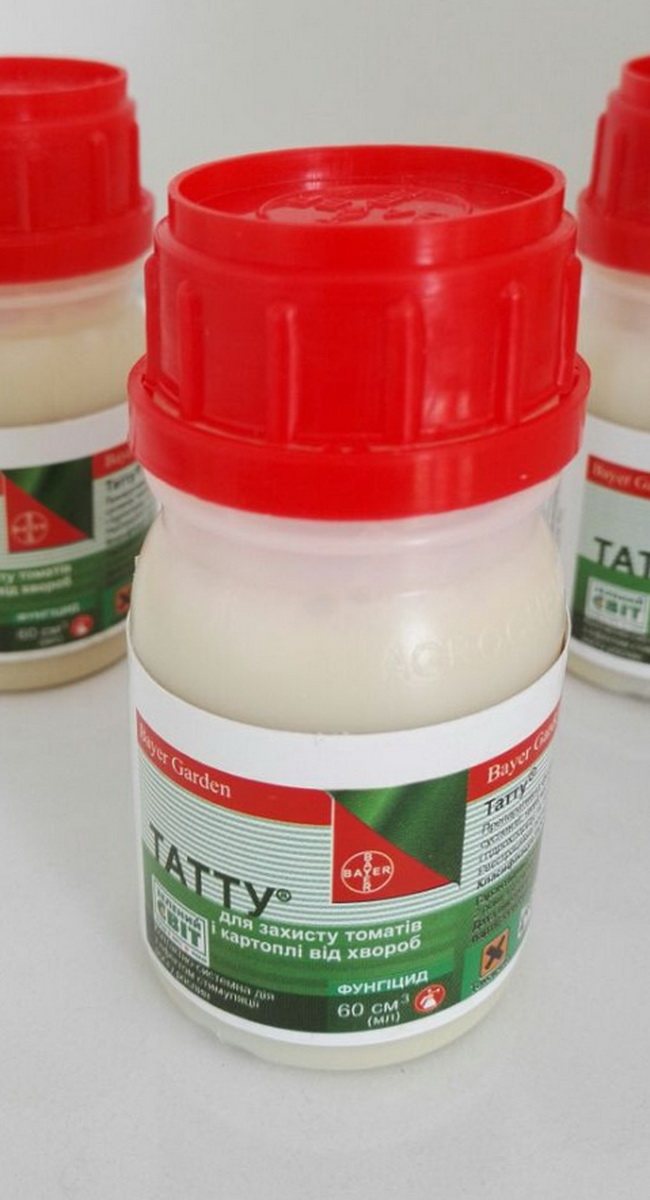

It is most often affected by powdery mildew, since this disease is typical for all Astrovs.
If we ignore the problem, then the Sentinelinks begin to wither away rapidly.
It is difficult to prevent the disease, as the pathogenic fungus spreads by air and can enter the plant through hands or water.
The main symptom is a whitish blotchiness that is easily swept away.
Treatment involves the treatment of saintbrinks with fungicides.
Of the pests, the following can attack the virgin aster:
- aphid;
- spider mite;
- meadow bug;
- butterflies scoops;
- earwig.
Insecticides are used to eradicate parasites.
Sometimes slugs can be seen on the plant.
They are collected manually or specialized traps are used to remove them.
Where is the best place to plant a September
It's easy to find a place for these flowers - they look good in any corner of the garden. They are good both on their own and in mixed plantings. The farthest corners of the garden decorate the septenins very well - after the rest of the flowers have faded, the septenins will delight you with their lilac petals for a long time.
If you want to make mixed flower beds, you should not plant low annuals such as petunias or pansies next to the saintbrines - an active perennial will quickly displace them, taking up all the free space. It is preferable to plant the same drought-resistant and unpretentious flowers next to santabrina - for example, medium-sized chrysanthemums.
Types and varieties of Sentbrinka
Breeders offer several varieties of Virginia Astra for garden cultivation:
Undersized
- Audrey is a cultivar with bright lilac flowers;
- Jenny looks like a compact shrub, the inflorescences of which are painted in a red tone;
- Snowsprite is a lush, snow-white groundcover during flowering.
Medium height
- Elina is a dense rose bush that grows up to 80 cm:
- Cassie with white bud corollas;
- Royal Velvet, strewn with purple inflorescences.
High
- White Lady can reach heights of over a meter;
- Desertblue has lilac flowers;
- Dastyrose with raspberry buds.
Preparing for winter
Young santbrinks, planted in early autumn, are mulched. The fragile roots, covered with fallen leaves or spruce branches, will painlessly survive the frosty winter. Adult bushes overwinter safely without shelter.
A little care and easy care, and unpretentious frost-resistant beauties from September to November will extend the pleasure of gardeners from admiring their flower garden.
Sentyabrinki - this is how the gardeners affectionately call Astra Virginian or New Belgian (the scientific name of Sentyabrinka Symphyotrichum novi-belgii), since the flowering period begins in September. Inflorescences of snow-white, blue, lilac, cornflower blue, pink, purple shades flaunt until late autumn.
Unpretentious so much that they grow like weeds
This member of the Astrov family is native to North America. Sentyabrinkas have taken root well in our area, they quickly run wild and can grow without any care for decades. Lush flowering bushes can be found on the outskirts of the taiga zone.
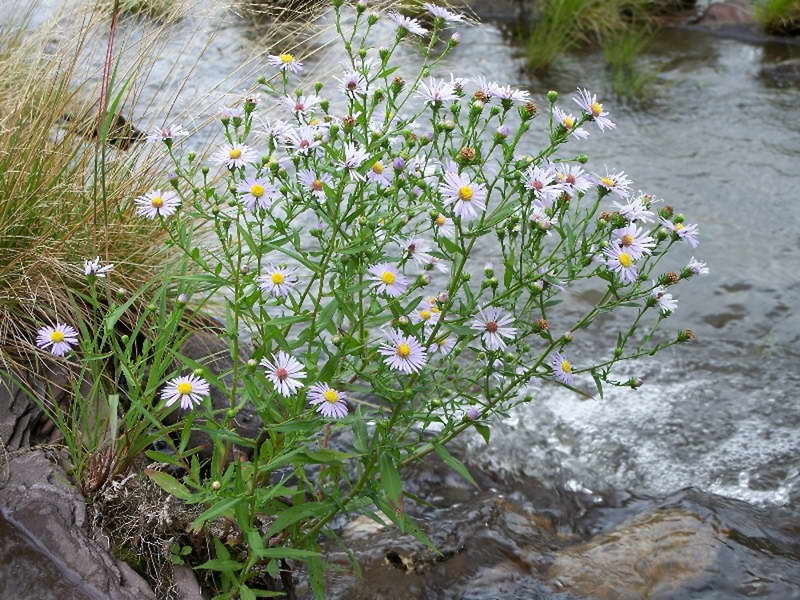

Sentinels in the wild photo
The bush looks like an inverted pyramid in shape. Stems are powerful, erect, well branched, densely covered with small leaves.
Huge variety of varieties
The perennial asters of the saintbrinka are many-sided: there are huge bushes about 2 m high and compact clumps barely reaching a height of 30 cm. At the end of August they are covered with numerous buds, and by mid-September the riotous flowering is breathtaking.
All the charm consists in a huge number of corollas with a diameter of about 1-5 cm, collected in basket inflorescences. The leaves fall off and the flowers can withstand temperatures as low as -50 ° C. If the warm weather returns, they will continue their beauty parade.
This unpretentious perennial will be a wonderful decoration for any corner of the garden.
Bloom
About 200 inflorescences open simultaneously on one bush. Corollas are similar to chamomile: the core (yellow-orange, less often - red or burgundy) is framed by a large number of narrow petals.The most common colors are lilac and lilac.
Healing properties
Like all asters, Sentbrinks have medicinal properties. They are rich in flavonoids, coumarin and saponins. These substances make flowers medicinal.
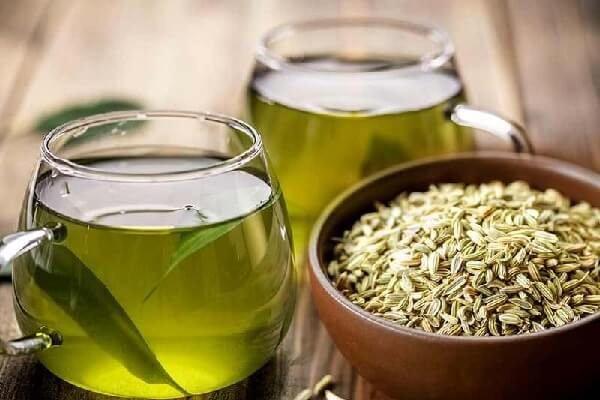

The plant has the following properties:
- antipyretic;
- expectorant;
- antihistamine;
- antihelminthic.
And also broths from Sentbrinks are effective for various problems with the gastrointestinal tract.
From seed
Cultivation and reproduction of saintbrinks by seeds is a rather complicated process. In the natural conditions of our climate, the seeds do not have time to ripen, the only reliable way to get them is to buy them in the store. You can start planting in autumn or early spring.
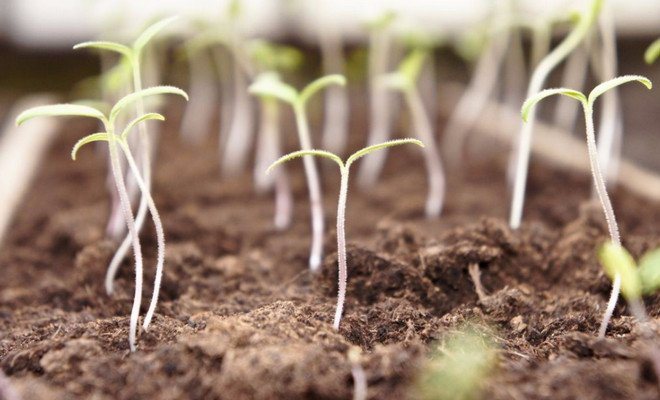

Main rules:
- in spring, seeds are planted in late April - early May, when the air temperature no longer drops below 10 degrees, and the soil is sufficiently warmed up;
- in the fall, seeds are planted at the end of October, the cold soil will keep the seeds until spring.
Important! Seed-grown santrinks bloom 3-4 weeks later than seedlings.
Substrate requirements
When choosing a planting site, it is taken into account that the New Belgian aster does not grow where potatoes or tomatoes grew. Despite its unpretentious care, it is still worth taking care of the soil in advance. Planting is carried out in nutrient soil.
Did you know? In Ancient Greece, an aster, planted at the entrance to a house, was considered a talisman against troubles and troubles.
Having decided on the place, a month before planting, the soil must be dug up, fertilized (overripe humus, compost). Reduce the acidity of the soil by adding lime or dolomite flour at the rate of 350-400 g per 1 square meter. Then loosen the earth, sprinkle with sand. The soil must be light and moist, otherwise the seeds will not sprout.
It will not be superfluous to neutralize the soil by treating it with a solution of potassium permanganate (2 g per 1 liter of water). Additionally, mineral fertilizers are applied at the rate of 10 g of superphosphate, 8 g of potassium salt to 1 square meter of soil. So the soil will be protected from diseases and enriched with trace elements for growth. Such requirements for soil cultivation apply to both planting of septenchins in spring and autumn.
Landing technology
Immediately before planting in the prepared soil, the seeds are soaked in a solution of potassium permanganate for several hours in order to avoid future diseases. The soil of the prepared holes is moistened.
Spread the seeds into the holes 30-50 centimeters apart with a distance of 3-5 centimeters between the rows. By adhering to this, ample space is provided for future growth and flowering. The depth of the seeds in the holes is 5-8 millimeters.
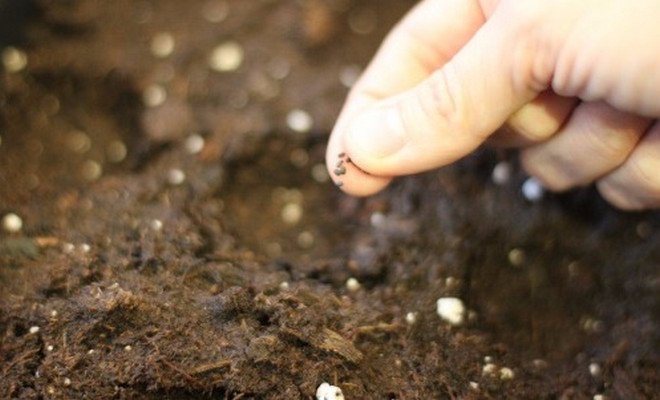

Having distributed the seeds in the holes, they are sprinkled on top with a layer of a mixture of earth and sand of 2-3 centimeters. To maintain soil moisture and avoid drying out during germination, the planting site is sprinkled with a thin layer of compost, covered with a thin non-woven material.
You will be interested to learn about the popular annual and perennial asters.
When sowing in the fall, this will keep warm and prevent seedlings from freezing. The germination time of spring seedlings is from 3 weeks to a month. The germination time depends on favorable weather conditions and high-quality soil processing.
Follow-up care
During the growing season, abundant watering without waterlogging is important. Watering alternates with loosening the soil up to 6 mm.
Important! Asters do not like high soil moisture and close occurrence of groundwater. They like moderate watering at the root.
When 2-3 full-fledged leaves appear on seedlings, thinning is allowed. These actions will allow you to save enough space for growth, prevent powdery mildew diseases.
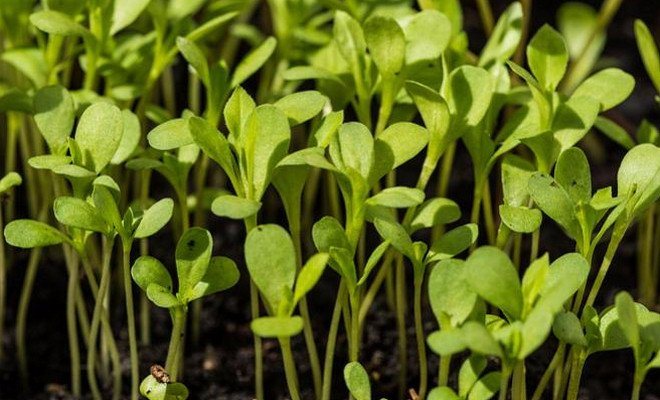

After watering the soil 2 hours before thinning, the seedlings are dug up, planted, not forgetting to moisten the soil at the transplant site.
Did you know? Young shoots, their leaves, petals of mature asters are successfully used in folk medicine.
After watering, the plants are fertilized. Frequent feeding increases the inflorescence size and future flowering times.
Top dressing is carried out in 3 stages:
- A week after planting, the seedlings are fertilized with any mineral fertilizer or mullein solution (1 part mullein to 10 parts water).
- When forming buds to feed the inflorescences, the soil is enriched with a solution of phosphorus and potassium in the ratio of 5 g of phosphorus and 2 g of potassium for each liter of water. You can sprinkle the granules directly onto the soil, taking into account the ratio per square meter.
- During the beginning of flowering, you can also feed the soil with a solution of phosphorus and potassium or use an ash infusion.
In the flower shop you can buy ready-made fertilizers, follow the instructions attached.


In addition to moderate watering and periodic fertilization, frequent weeding is necessary to avoid disease or pests. Sentinels can attack slugs and snails, and weeding will allow you to notice it in time.
What difficulties arise in the growing process
Even unpretentious plants can cause difficulties, Sentbrinks are no exception.
Gardeners noticed that seeds germinate poorly. Even following agrotechnical recommendations, the probability of seedlings is minimal.
These flowers cannot be planted after nightshade, tulips, carnations, gladioli and levkoi. Difficulties with diseases and fungal infections may arise.
Without nutrients and mineral fertilizers, saintbrinks bloom finely, the color becomes pale.
The rest of the flower does not cause problems.
Where is the flower planted?
Sentbrinks are grown in group plantings in flower beds. Along the garden paths and alleys, the culture is usually placed in one row. Throughout the summer, thanks to the highly branched bush and the decorativeness of the leaves, the plants serve as a magnificent green border. And during the period of active flowering they are a worthy decoration of the garden. A rich assortment of perennials allows you to make all kinds of compositions.
In the first year of the growing season it does not bloom abundantly. The buds bloom only on individual bushes. Overgrown adult asters will delight you with many medium-sized, but bright flowers of various shades. Over time, the number of peduncles decreases, so it is advisable to rejuvenate the culture every 3-4 years.
Oktyabrinka care
Oktyabrinki are not whimsical plants, they do not require special attention to themselves. Therefore, caring for them comes down to only a few actions:
* Watering. Bushes of Oktyabrinok do not require frequent watering. However, if they are rarely watered, they will not grow to their full height. It is recommended to water the Oktyabrinok bushes only on hot days. Use warm, settled water.
* Top dressing. During the growing season, you can feed it several times with liquid fertilizers, for example, a solution of bird droppings. It is not recommended to feed with nitrogen-containing fertilizers.
* Weeding, weed removal. Like any plant, Oktyabrinki do not tolerate competition from other plants, so from time to time the site must be loosened and weeds removed.
* Garter. High Oktyabrinka must be tied to pegs. In the spring, in order for the bush to be neat, you should slightly pinch the branches.
* Diseases. Pests. From fungal diseases, the flowers of Oktyabrinka are threatened by powdery mildew. Therefore, as soon as the first signs of the disease appear, it is necessary to urgently respond and take appropriate measures. For preventive purposes, it is recommended to treat the Oktyabrinok bushes with a solution of copper sulfate or Bordeaux liquid.
Planting saintbrinks in open ground
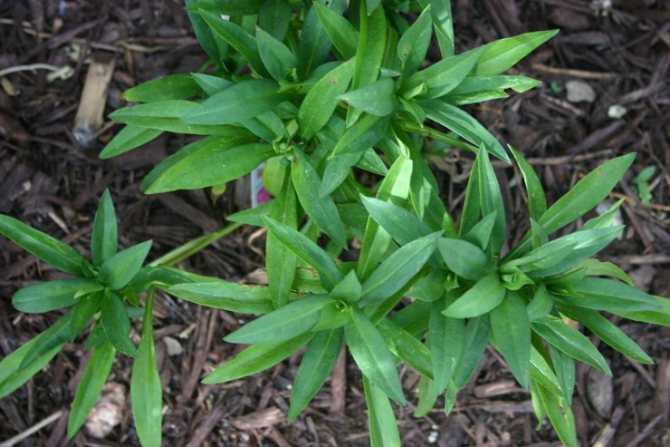

Shoots that have taken root can be immediately planted in open ground. A well-lit place in the garden, protected from drafts and located on a hill, where the risk of flooding of plants can be prevented, is chosen as a site for cultivation.
Sentyabrins will do well on almost any substrate except loamy soil.
The site for cultivation should be pre-prepared, therefore, a few weeks before planting, it is dug up and the soil is fertilized with organic and mineral compounds. The depth of the holes depends on the size of the root system of the shoot. The seedlings are placed in moist pits, evenly distribute the soil around the bush and lightly tamp the surface.
When to transplant saintbrinks?
When you need to plant santbrinks, the question is important. Virginia aster bushes, growing for a long time in one place, need to be transplanted. Over time, the soil becomes compacted, depleted, which prevents the normal access of oxygen to the roots. Bushes are prone to overgrowth - solid dense plantings will interfere with each other. The situation will be changed by a transplant, which is carried out approximately once every 4 years (combine with dividing the bush).
As for the timing, it is preferable to do this in the spring: the bushes will have time to take root well and get stronger for the winter. If replanting in the fall, do it as early as possible - the plants should at least take root.
In the video, the autumn planting of September:
Unpretentious saintbrinks - fall flowers
The many-sided flowers of the saintbrinka-octobrinka will be appropriate anywhere in the garden because of their discreet beauty and long late flowering, when other inhabitants of the garden have long since retired. It is only important to choose the right asters in height and then it will be possible to make a mixed mixborder from asters alone, although plantings with other flowers are also very beautiful. Last year, after reading that they are frost-resistant, I left one bush on the street. She wrapped him up with straw and dry foliage, and dug up two bushes, put them in pots and put them in the cellar. The one that spent the winter on the street did not even come out in the spring, and they gave shoots in the cellar. Not every winter there is a snowy winter.
Over the summer, the bushes grow twice in breadth. Amazing saintbrinks are not afraid of frosts and in spring they give new shoots. By dividing the bushes in the fall or spring, santbrinks are propagated. If watering is rare, the bushes will be shorter. Perennial asters bloom amazingly. The raspberry flowers of the saintbrinka are still exclusive in our gardens. Sentyabrinki are one of the latest flowers in the garden, delighting us with their flowering, when yellow leaves are already falling from the trees.
It is not for nothing that perennial asters are also called ssentbrinks, octobrinks and even noyabrinks - they delight with their small but lush flowers until late autumn, right up to stable frosts. Perennial aster is a tall plant, up to 200 cm high. There are compact, low varieties. Flowers withstand partial shade, but grow better in sunny areas. They quickly lose their germination and do not always ripen on a bush. It is possible to divide perennial aster bushes in spring and autumn. It is advisable to provide the flower with watering during budding.
Shrub aster (Aster dumosus, Symphyotrichum dumosum). See a photo of the aster bush in my garden below. From my own experience, I will say that this is one of those plants that you remember when it begins to bloom, the shrub aster is so unpretentious. Astra Frikarta (Aster × frikartii) is a hybrid of the Italian aster and the Thomson aster. It is believed that the Frekart asters took the best features from both parents: large flowers, long flowering from mid-summer to mid-October, and unpretentiousness.
Astra Novobelgiskaya - can be of different heights depending on the variety. The leaves of the Novobelgian aster are devoid of pubescence. Astra New England - higher than Novobelgiskaya, the bush is more powerful and spreading, it has more leaves and flowers. Bushes of this variety take longer to grow.
Cuttings
An effective way of vegetative propagation of sentyabrins is cuttings, that is, propagation by apical shoots. The method is popular with gardeners. The process is simple, but certain conditions must be met.
Important! The main feature of cuttings is that a plant propagated in this way retains all its parental properties.
Blank
In the spring, young upper shoots of 7-15 centimeters in size of a mature and healthy bush come off. Unnecessary leaves are cut off from the bottom of the resulting cutting, only the top remains.
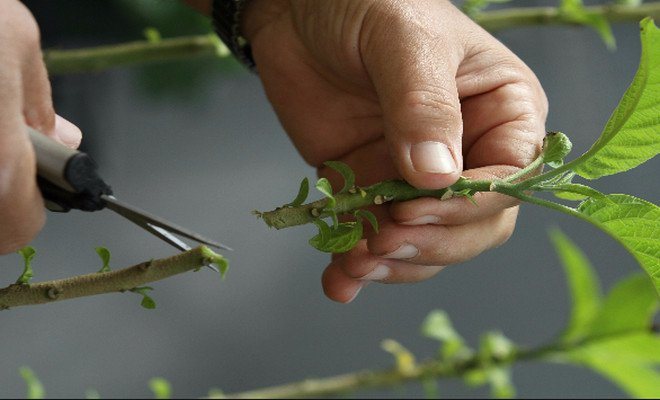

With a sharp knife below the knot, an unnecessary shoot is cut off at an inclination of 40-45 degrees. For further successful rooting, the cuttings are treated with any phytohormone solution (Kornevin).
A stalk is placed in the solution for 12-15 hours with a depth of 3-5 centimeters (depending on size). It is important not to wet the cutting leaves.
Rooting
It is easier to root cuttings in separate containers (boxes). The soil for planting is suitable in terms of its qualities, as in the case of seedlings. The layer of the mixture is 10-12 centimeters.
It will not be superfluous to add a layer of perlite to the mixture, it is poured in a small layer on the ground. For neutralization, spill the resulting mixture with a solution of potassium permanganate.
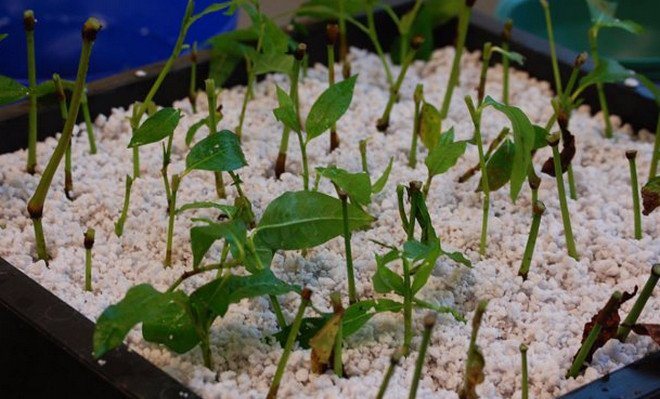

The resulting cuttings are planted in the ground at an angle (cut down for successful rooting), sprinkled on top with a layer of 1 centimeter of earthen mixture.
Find out the difference between perlite and vermiculite.
Water abundantly, cover with plastic wrap. At this time, the seedlings are afraid of the sun, so it is better to put the box or container in the shade.
Landing
After 1-2 weeks after seedling the cuttings, callus appears at the cut site, and after 3-4 weeks the first roots. Growing and strengthening, the roots contribute to the development of the plant. If the first shoots begin to appear, then rooting has occurred.
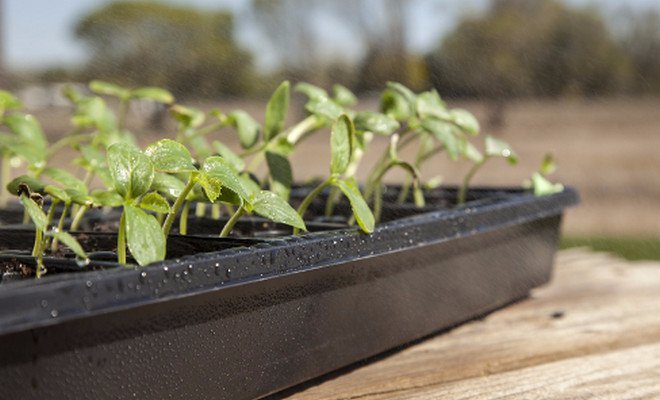

Having given time to grow the shoots, you can begin to gradually harden the seedlings. Several times a day, a plastic film is opened for a short time, the airing time is gradually increasing. If young shoots develop well, the film is removed completely. This time falls on the month of August.
Important! In close proximity to other flowers, New Belgian asters easily interbreed, which leads to
«
colors
»
in the bush.
Late August - early September, when the cuttings have developed, you can start planting in a permanent place. There are no special requirements for the substrate, young shoots have grown stronger and can feed from any soil. For the winter, young shoots are covered with fallen leaves or sawdust.


